The Best Juicer for a Fresh Start to 2026 – Tested by Our in-House Chef and Expert Team of Health Enthusiasts
We found the best juicers for green detoxes, immune-boosting ginger shots, and hotel-worthy breakfast blends

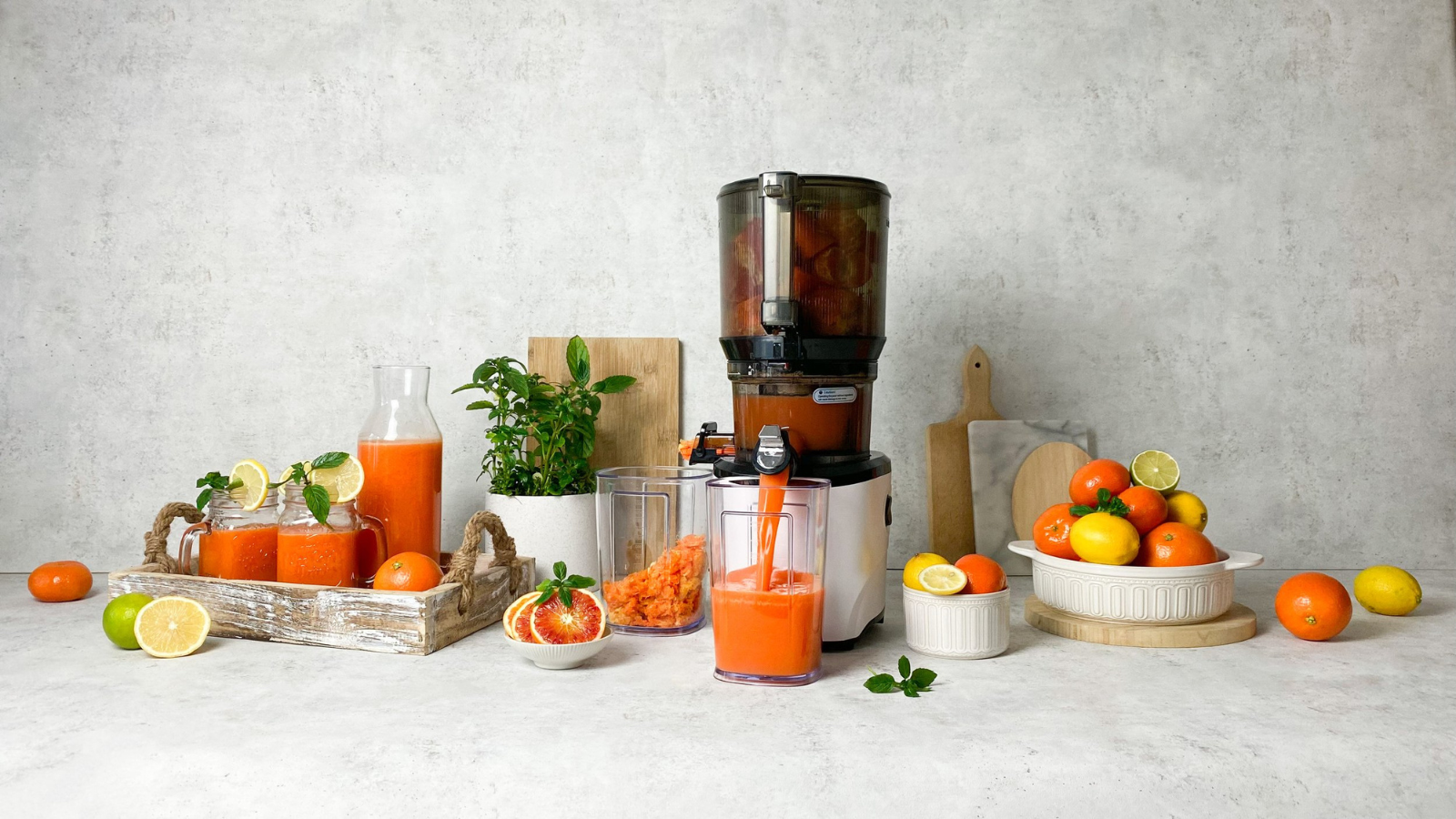
Last summer, I went on a yoga retreat in Greece. Every morning, the retreat chef prepared fresh ginger shots to energize us before sessions. This daily ritual was so refreshing and invigorating, it made me want to bring a slice of that healthy lifestyle into my own home.
I'm actually a kitchen appliance expert and trained cook myself, but even I found the juicer market confusing at first. There are so many styles and brands available. The two main methods to know are the best centrifugal juicers, which are fast and budget-friendly, and the best cold press juicers, which work more slowly but yield a more nutrient-rich juice.
Luckily, I've got an expert team of product testers who have trialed over 20 of the best juicers to find the most reliable options. Across the board, we've been looking for designs that are easy to use, require minimal prep work, and make cleanup a breeze.
Our favorite juicer overall is the Kuvings Auto10. Not only does it make incredible juice, but it can also whip up sorbet, nut milks, smoothie bowls, and more. You could pretty much run your own detox retreat with this one! But, if you’re looking for something smaller or more budget-friendly (I track the sales all year round), you’ll find more top picks below.
The Quick List
Here’s your shortcut to fresh, homemade goodness – our quick list of the best juicers. You'll find more in-depth details further down the page.
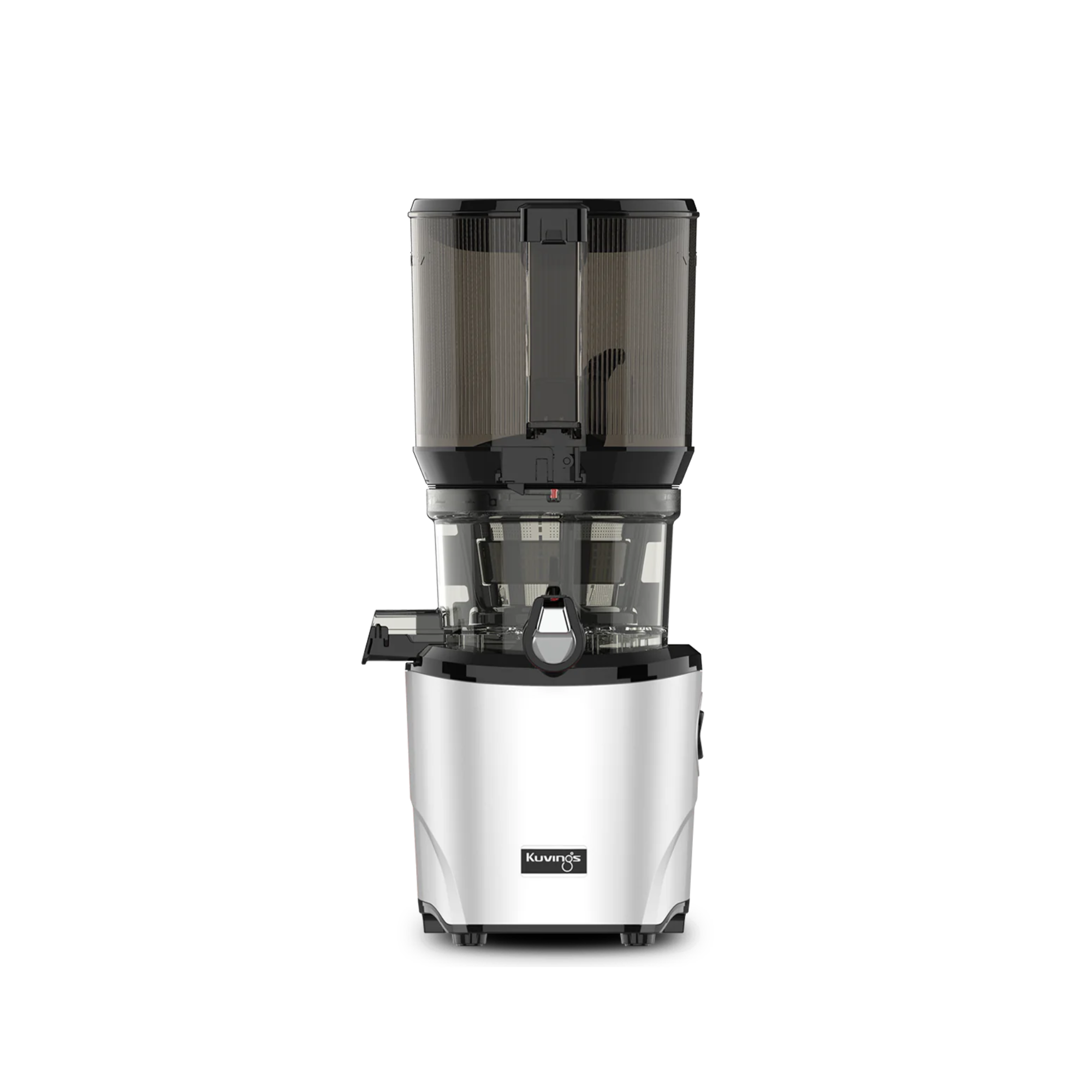
Effortless to use and oh-so premium, this is the best juicer out there. The Kuvings extracts every drop of goodness from the toughest ingredients – no chopping or dicing required.
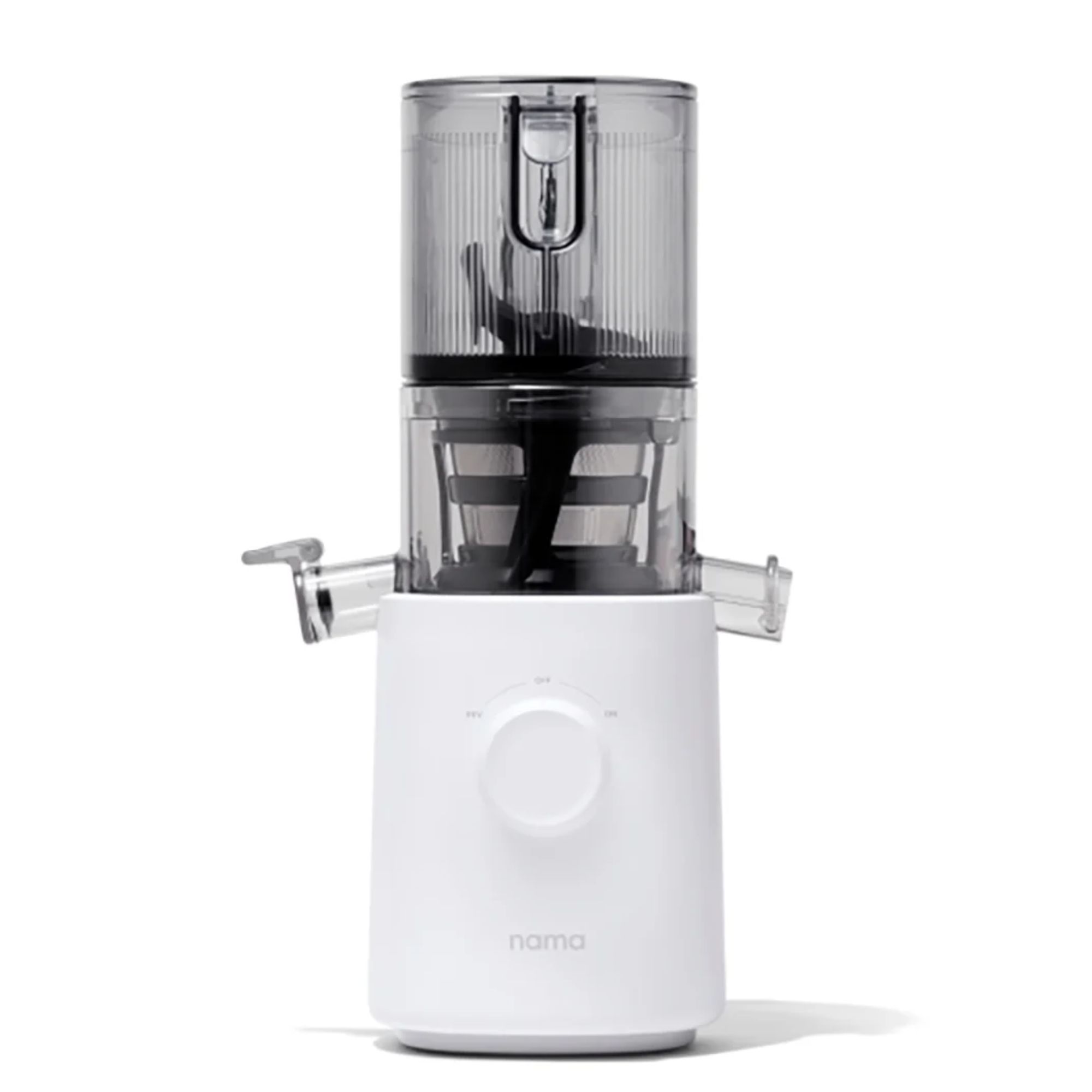
This is easily the best juicer for small spaces. It's small but mighty, with powerful 'hands-free' functionality and excellent yield. Perfect for petite kitchens.
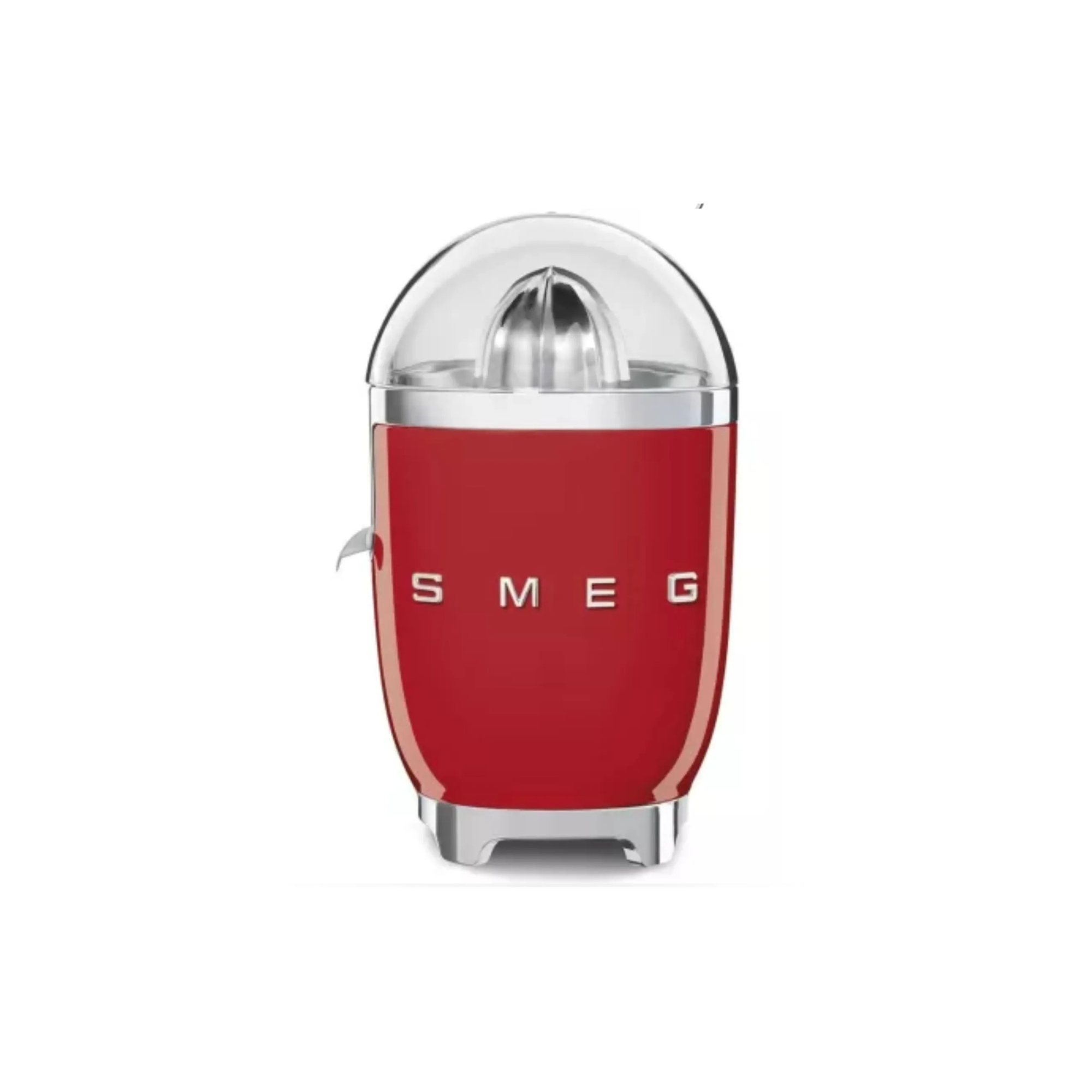
We're in love with this simple citrus juicer. It's effortless from start to finish, and comes in a range of shades to complement your kitchen color palette. However, it only juices citrus, which can be limiting.
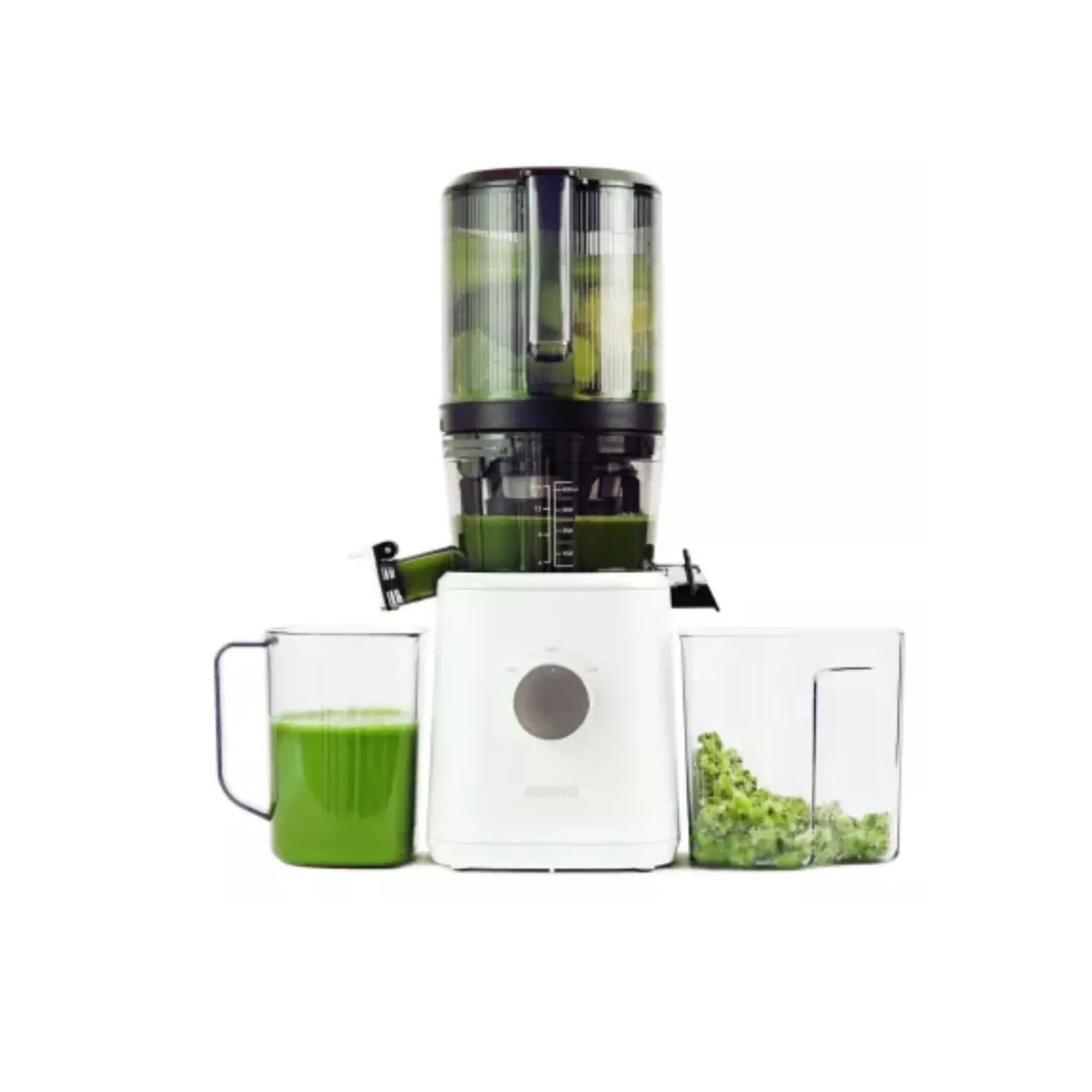
For an Instagram-worthy juice station, the Nama J2 is your best bet. It's bigger than the J3 above, but still sleek and 'hands-free' like the models at the top of this list.

Martha Stewart uses this multi-tasking machine, which naturally piqued our interest. It has a juice chute and blender pitcher, saving you from buying two appliances. It can crush ice, too. Just make sure you have plenty of space in your cupboards.

Powered by a 1000W motor and fast-spinning blades, this cheap centrifugal juicer can take on all types of produce. It's quick, but it does get a bit noisy.
The Best Juicers
Best Juicer Overall

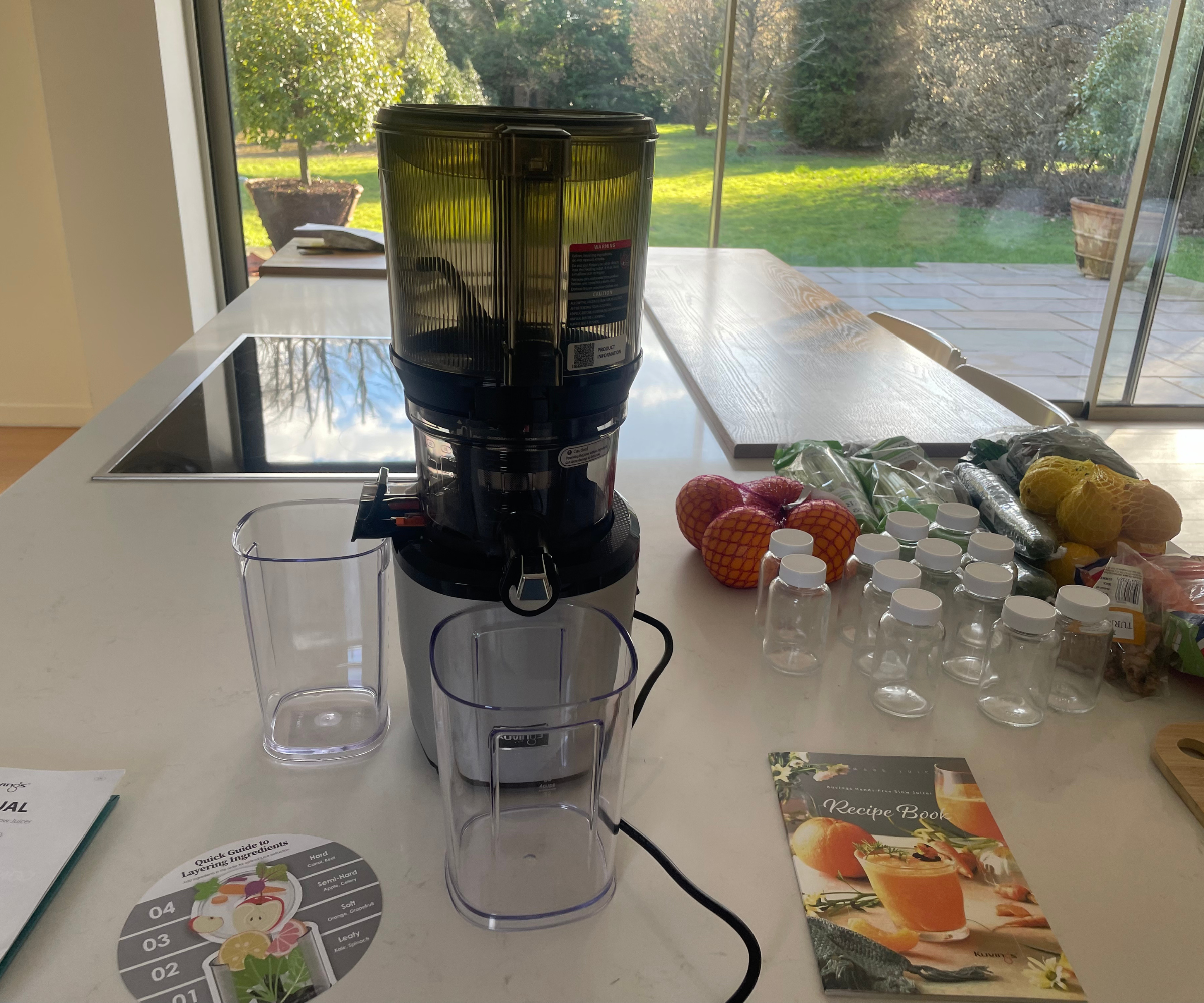
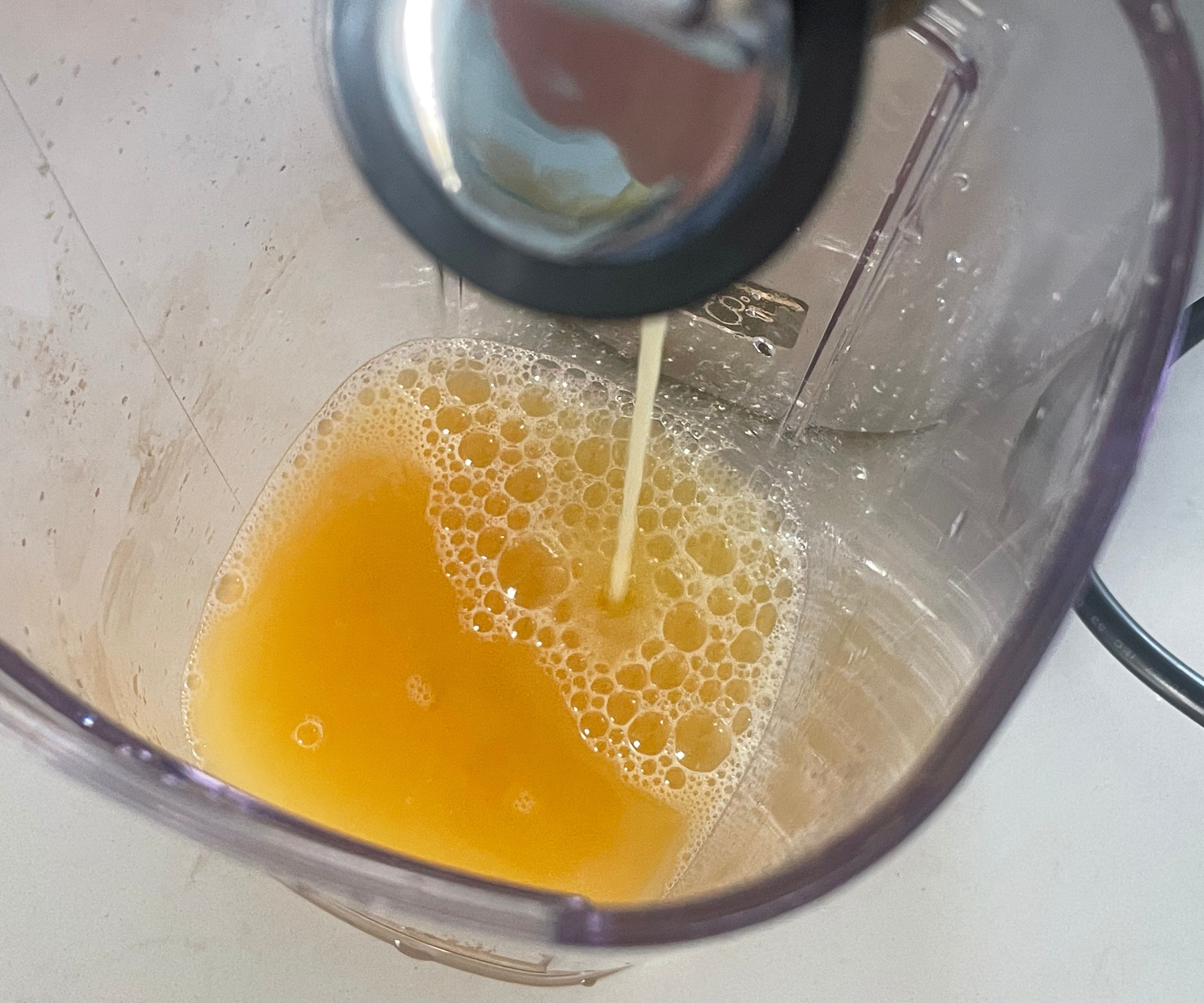
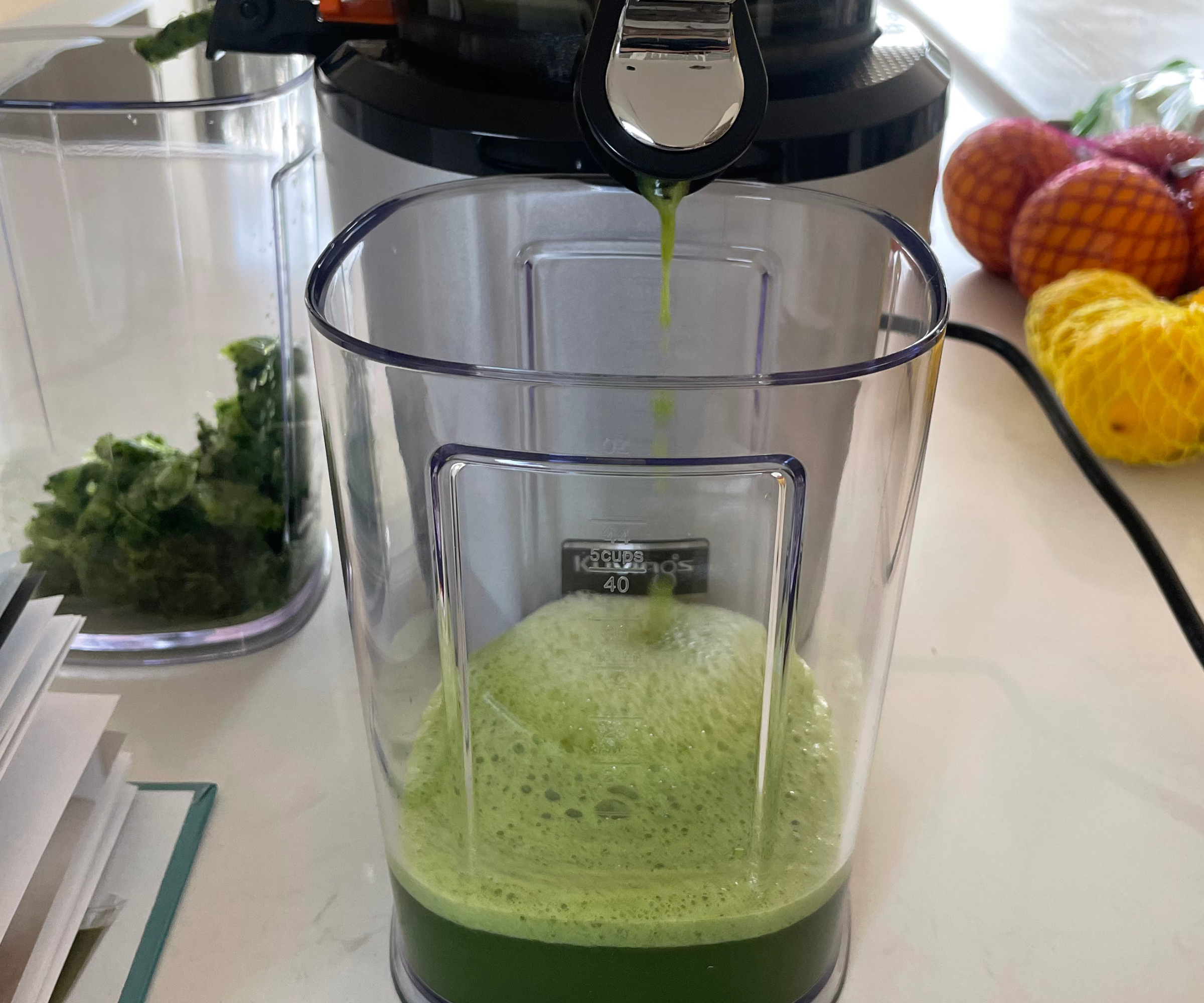
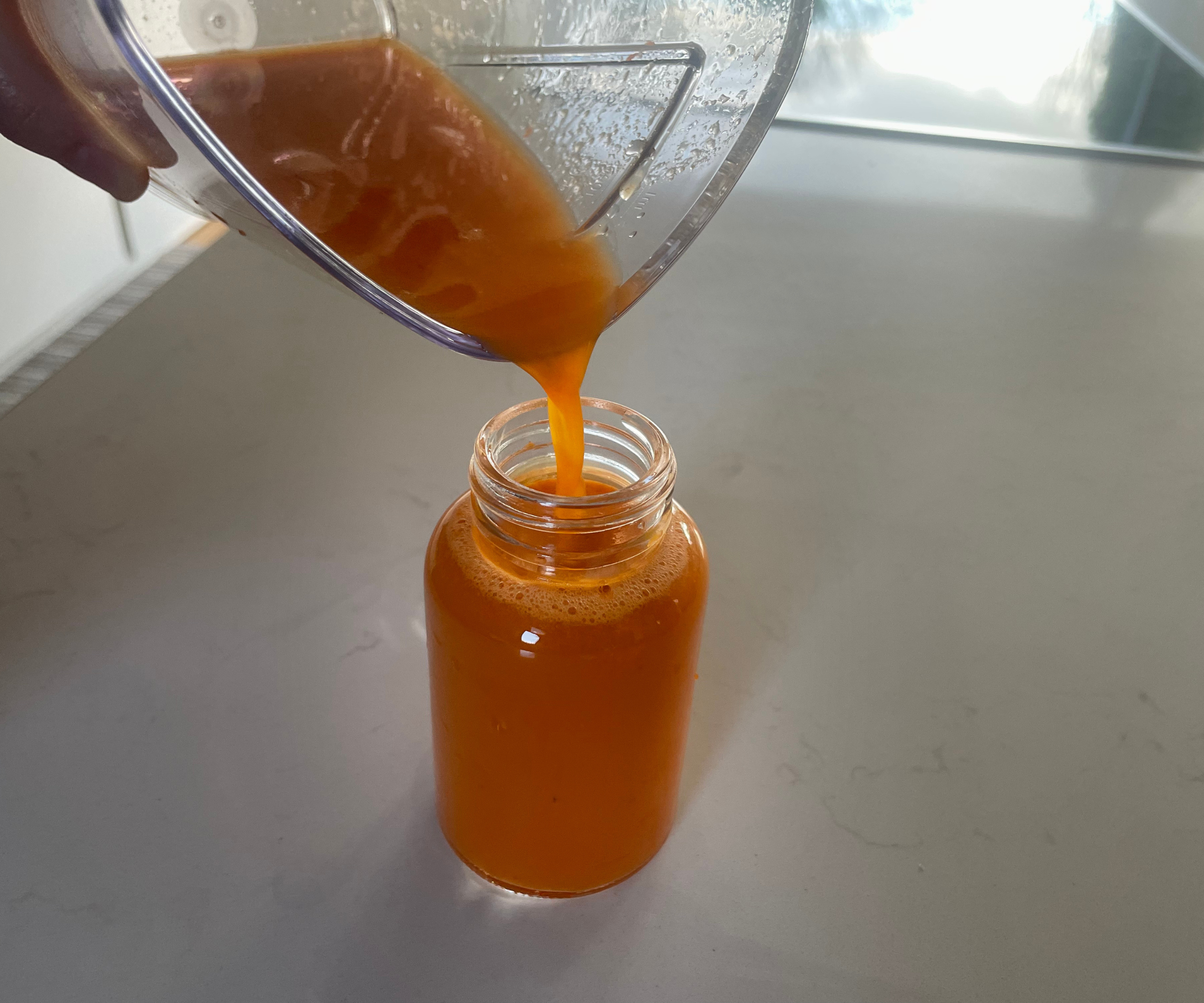
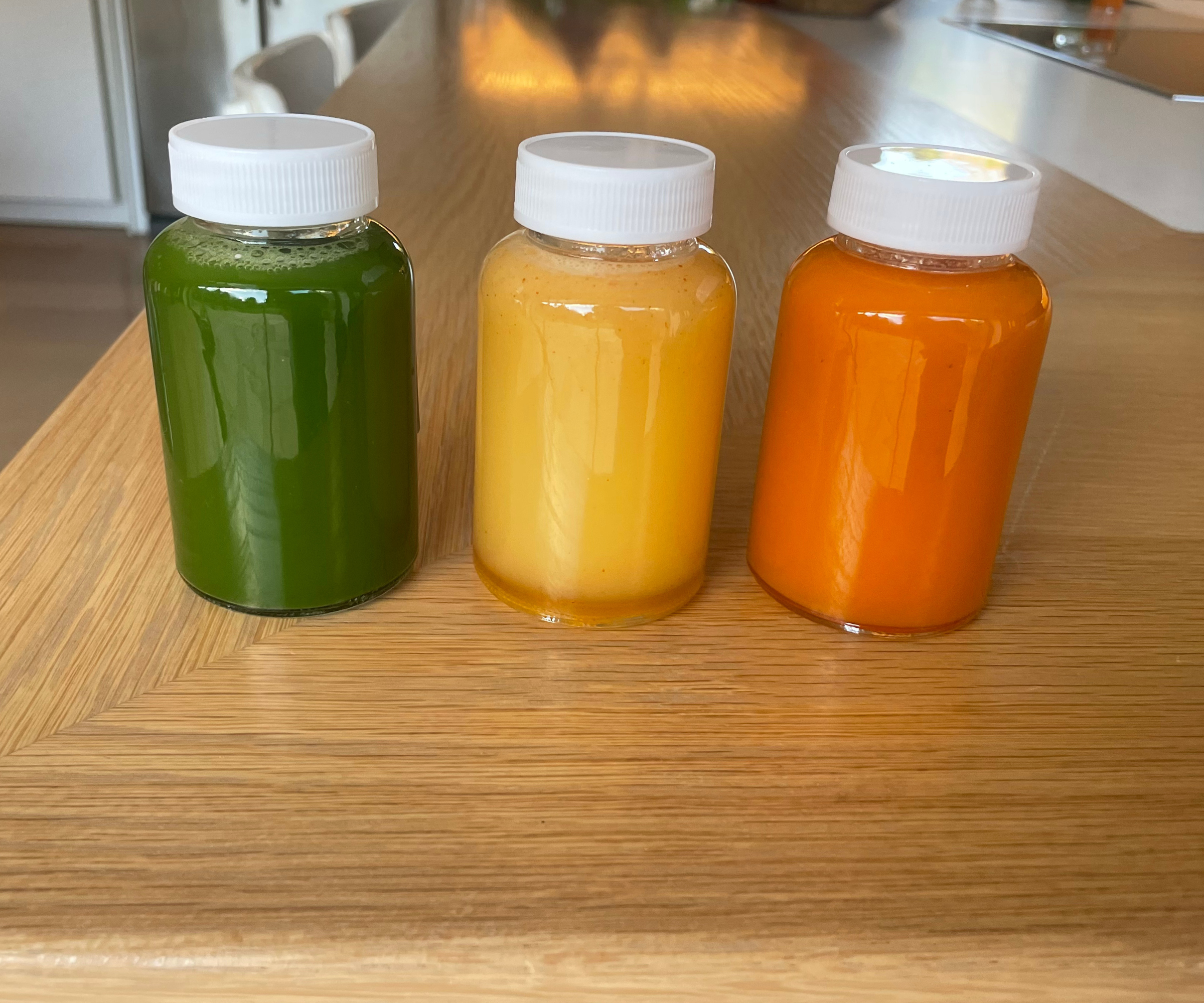
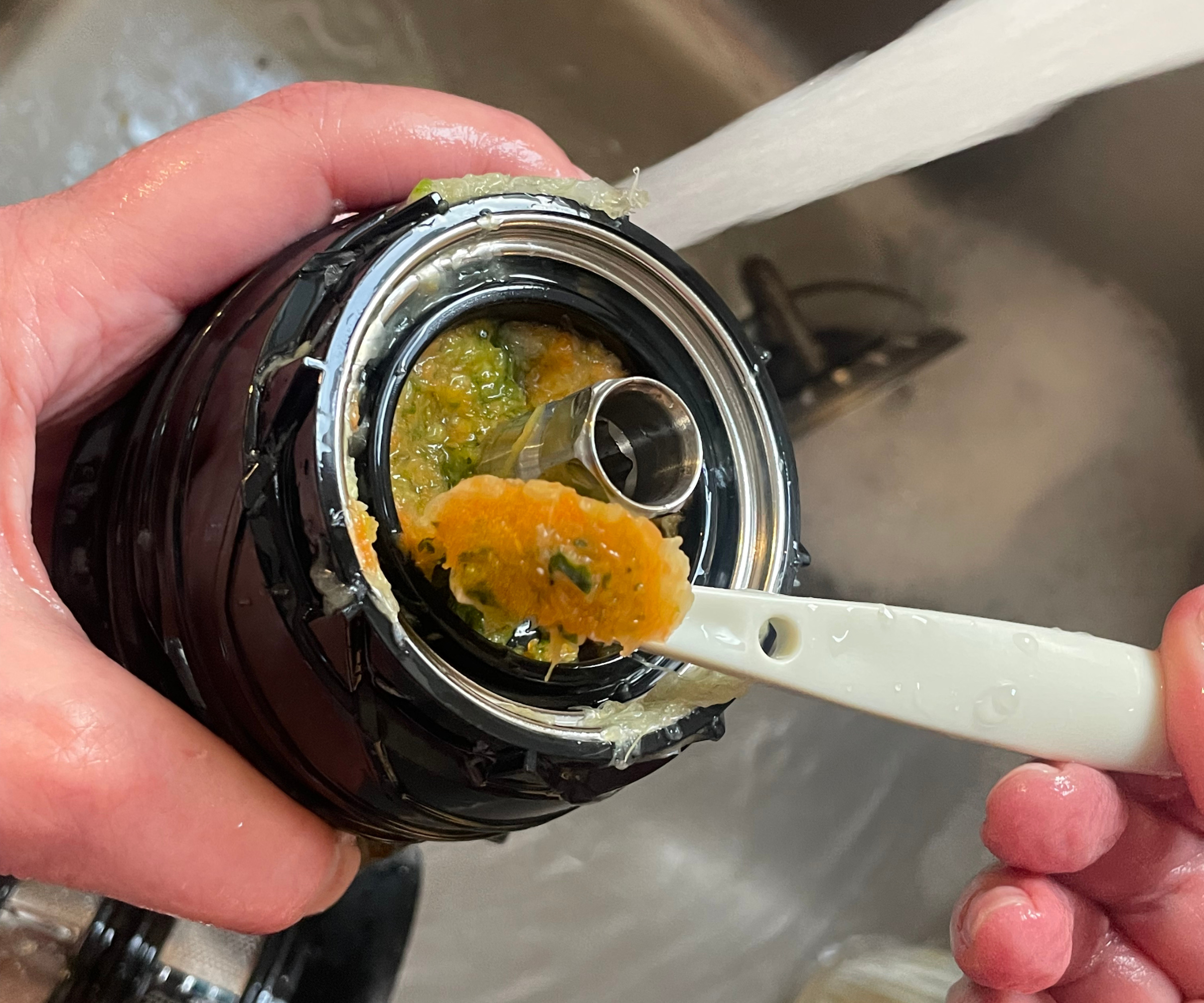
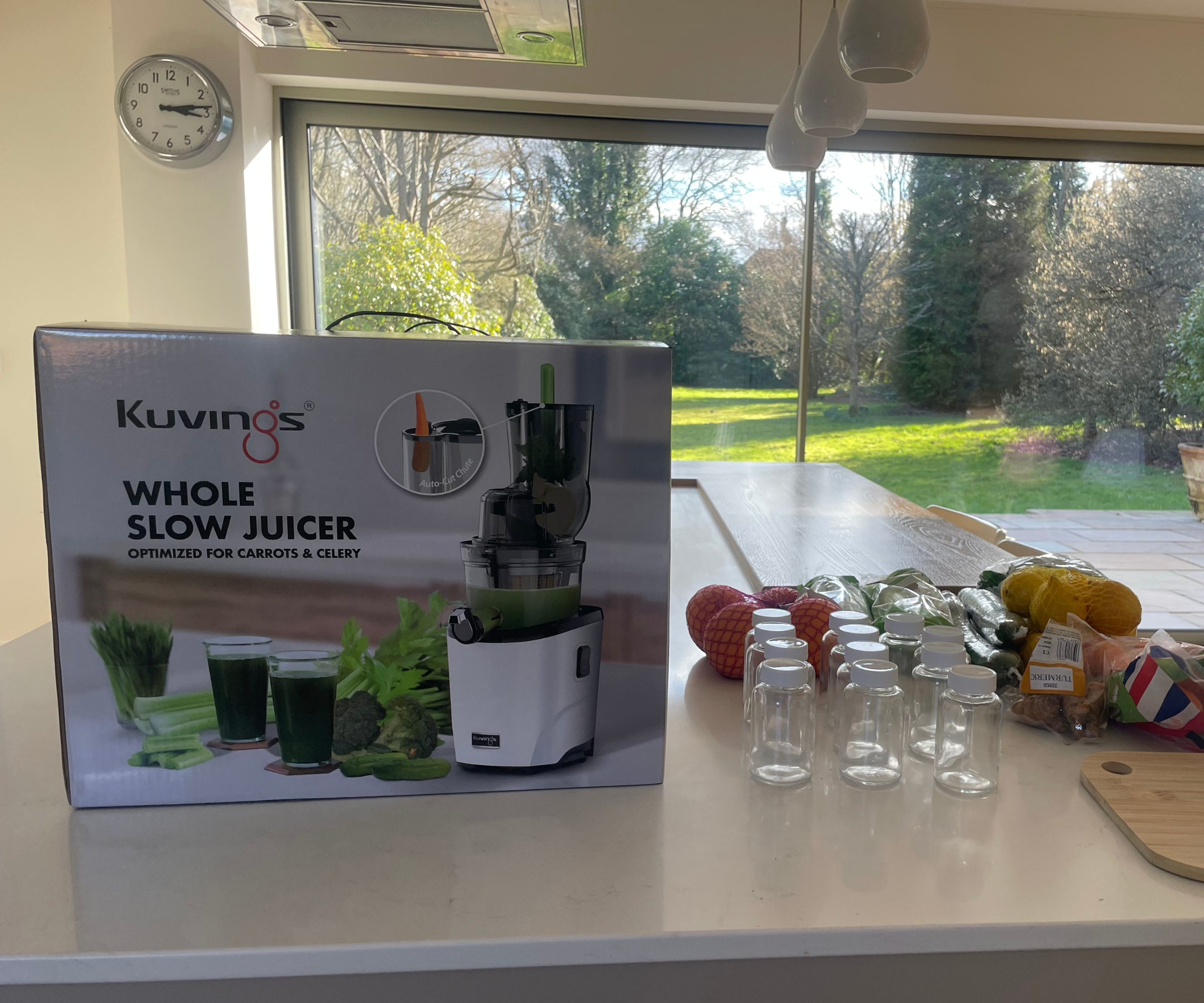
1. Kuvings Auto10S Hands-Free Slow Juicer
The best juicer that money can buy
Power: 240W | Dimensions: 10 x 8 x 18 inches | Capacity: 100oz hopper | Chute size: 6 inches | Motor warranty: 10-year limited warranty
What we liked: We don't often talk in superlatives, but the Kuvings warrants them all – it's the fastest, largest, finest, easiest juicer on the market. It produced the smoothest results across fibrous ginger shots, green juices, and carrot juice, and it can even make smoothie bowls and frozen sorbets.
The beauty of the Kuvings is also in its sheer simplicity. Lots of juicers have small feeding chutes that require a lot of chopping into chunks beforehand. However, with an extra-wide mouth and hands-free functions, you won't even need to touch a knife in the kitchen – or stand there feeding ingredients one by one. Plus, there's a flip gate that works to let fruit in and keep fingers out.
Who would it suit? Keen juicers who want quick and easy drinks. Even though this is a pretty expensive model (which normally means we tread with caution when recommending it to everyone), we think it's worth every dollar.
Small criticisms: The only problem with the Kuvings (aside from the fact that we wish it were a little cheaper) is its height. Standing 18 inches tall, this slow juicer might not fit beneath standard kitchen cabinets. You'll have to display it on a kitchen island or store it in parts. It also comes with lots of different parts that take a little more effort to clean, as none of them can just go in the dishwasher. It does come with some excellent cleaning utensils and accessories, though, which makes things much easier.
You can read more in our Kuvings Auto10S Hands-Free Slow Juicer review.
Best Juicer for Small Spaces


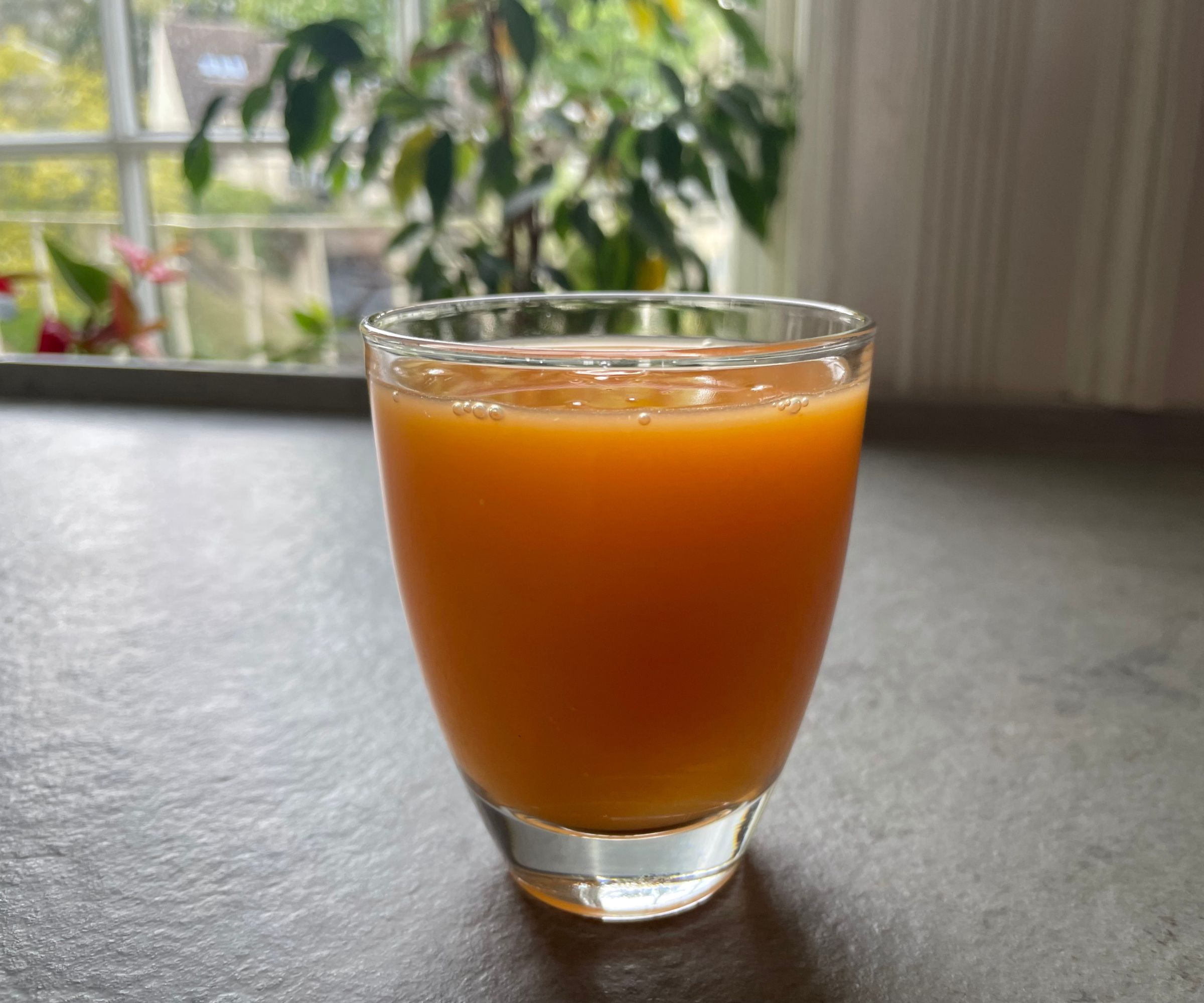


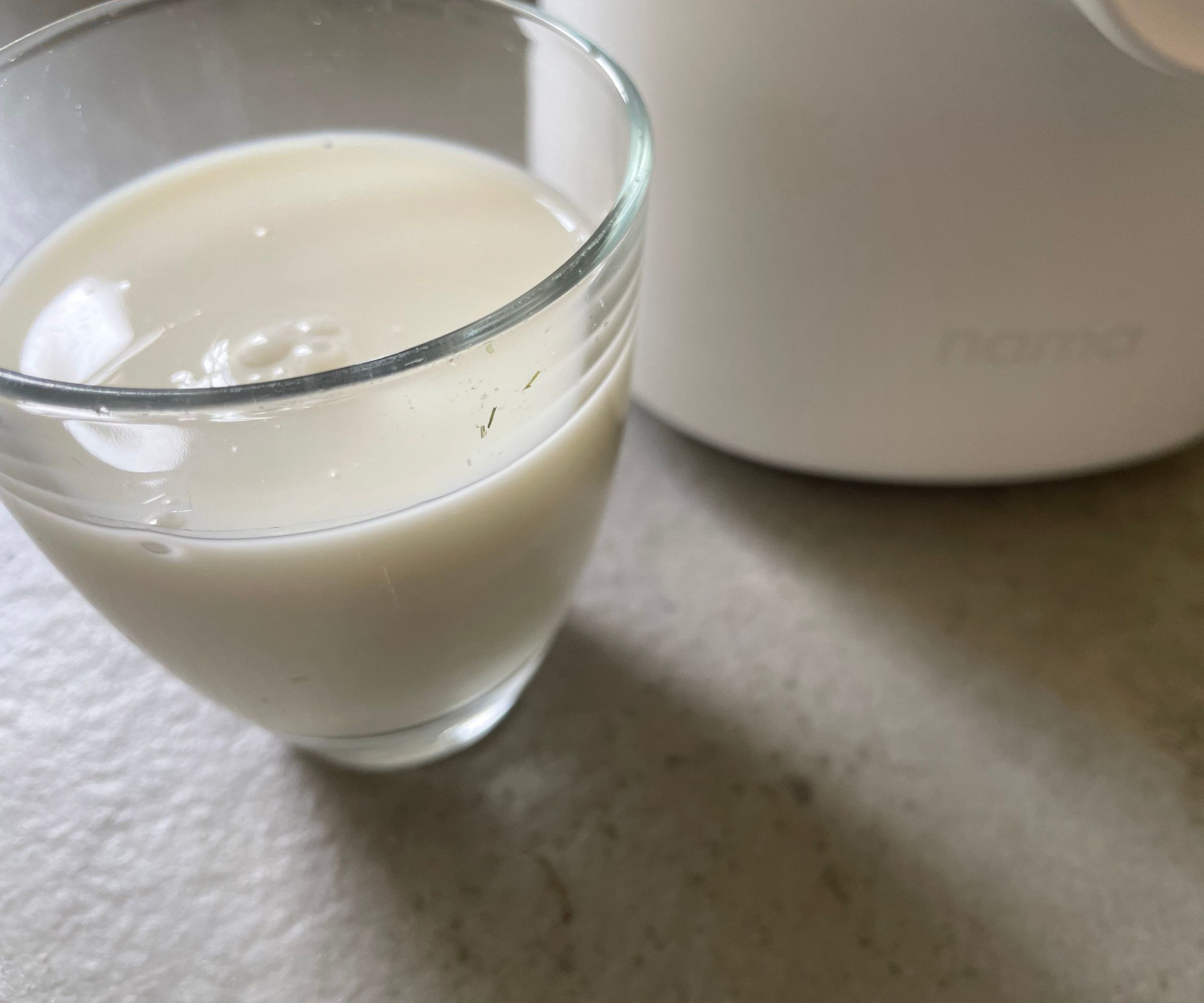
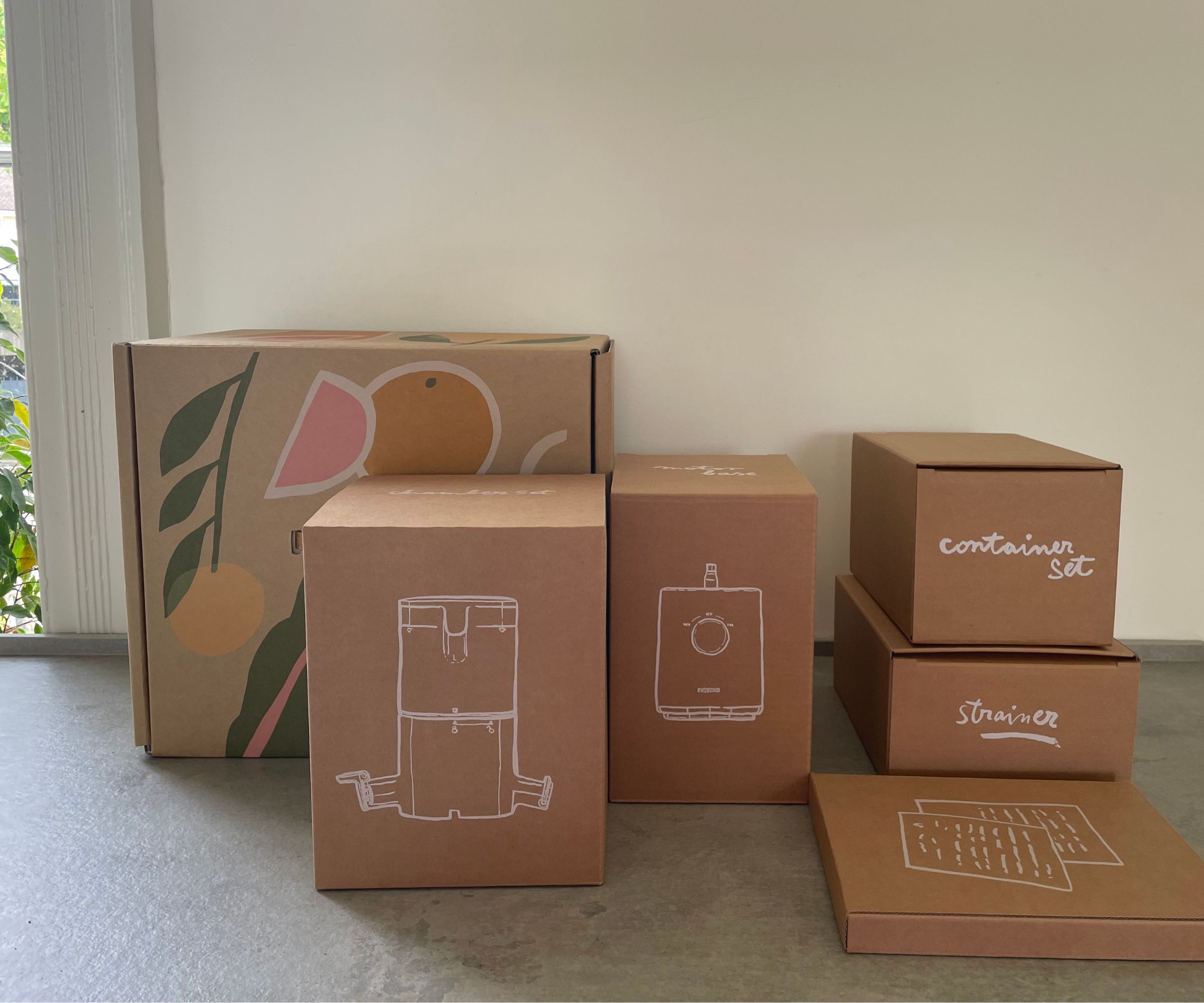
2. Nama J3
A petite juicer that looks as good as it performs
Juicer type: Masticating | Power: 200W | Capacity: 40 oz | Chute size: Unlisted
What we liked: The Nama J3 is a compact and lightweight cold-press juicer from one of the most premium juicing brands. The hands-free operation makes juicing effortless – simply load the ingredients and let the machine do the hard work. It’s versatile enough to make all sorts of fresh juice (and we even made almond milk), and with a 15-year warranty, we felt that the J3 is built to last.
The premium experience starts with the unboxing process. The Nama arrives in a beautiful box, with neat bags around each part of the appliance, an easy start guide, a recipe book, and an illustrated instruction manual. Whilst most juicers overcomplicate things with lots of different components, the Nama is simple and elegant.
Who It Would Suit: The Nama J3 is ideal for individuals or couples who mainly make single servings or shots. It’s perfect for anyone with a small kitchen or who wants a portable, easy-to-use machine. Beginners who want an easy cold-press juicer without the complexity of larger models will also find it appealing.
Small Criticisms: The smaller hopper yields only about 8–16 ounces per cycle, making it a tad tedious for batch juicing. Also, if you want variety, this doesn’t support attachments for sorbets and fun extra features.
Our full Nama J3 review has more details.
Best Citrus Juicer
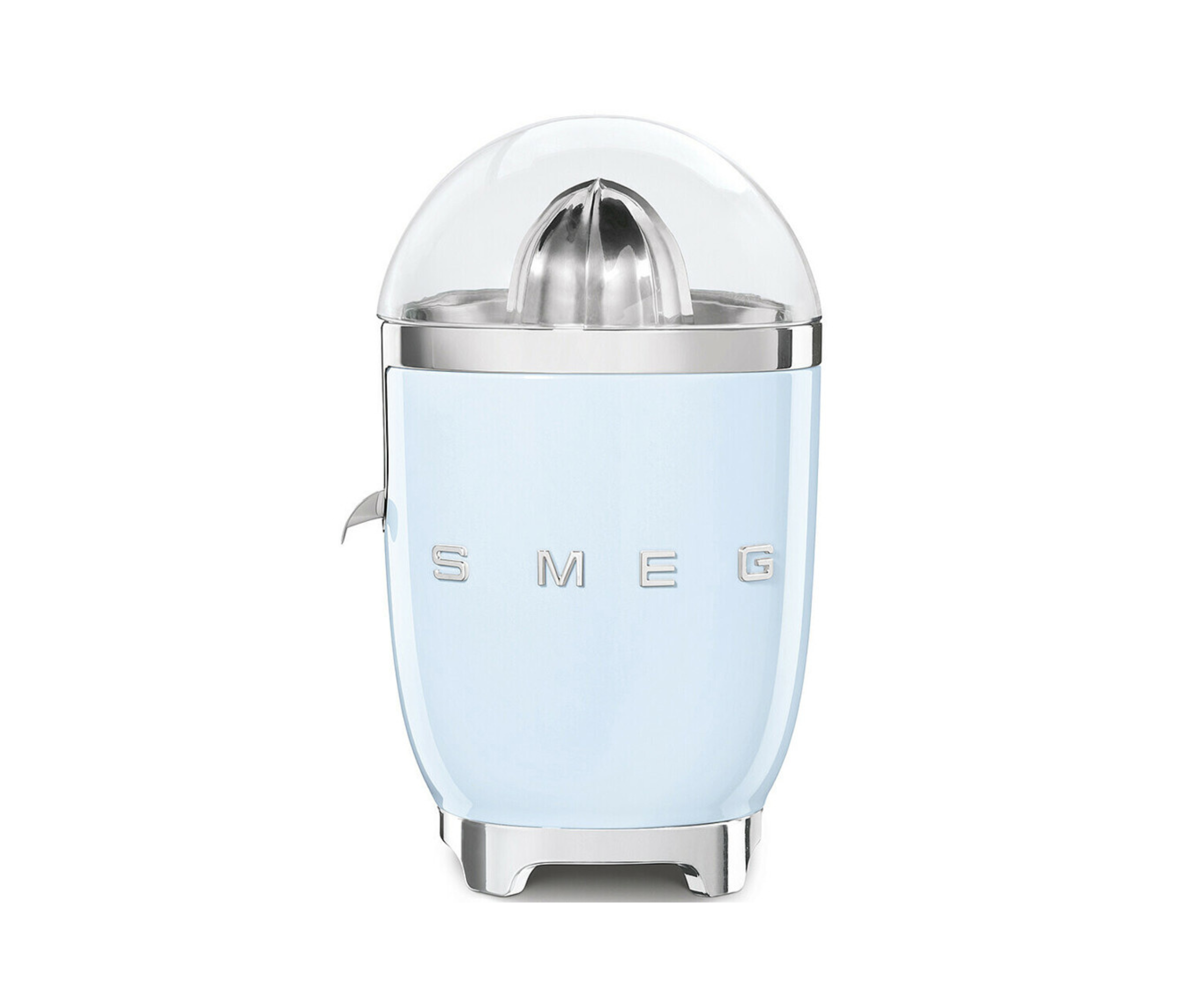


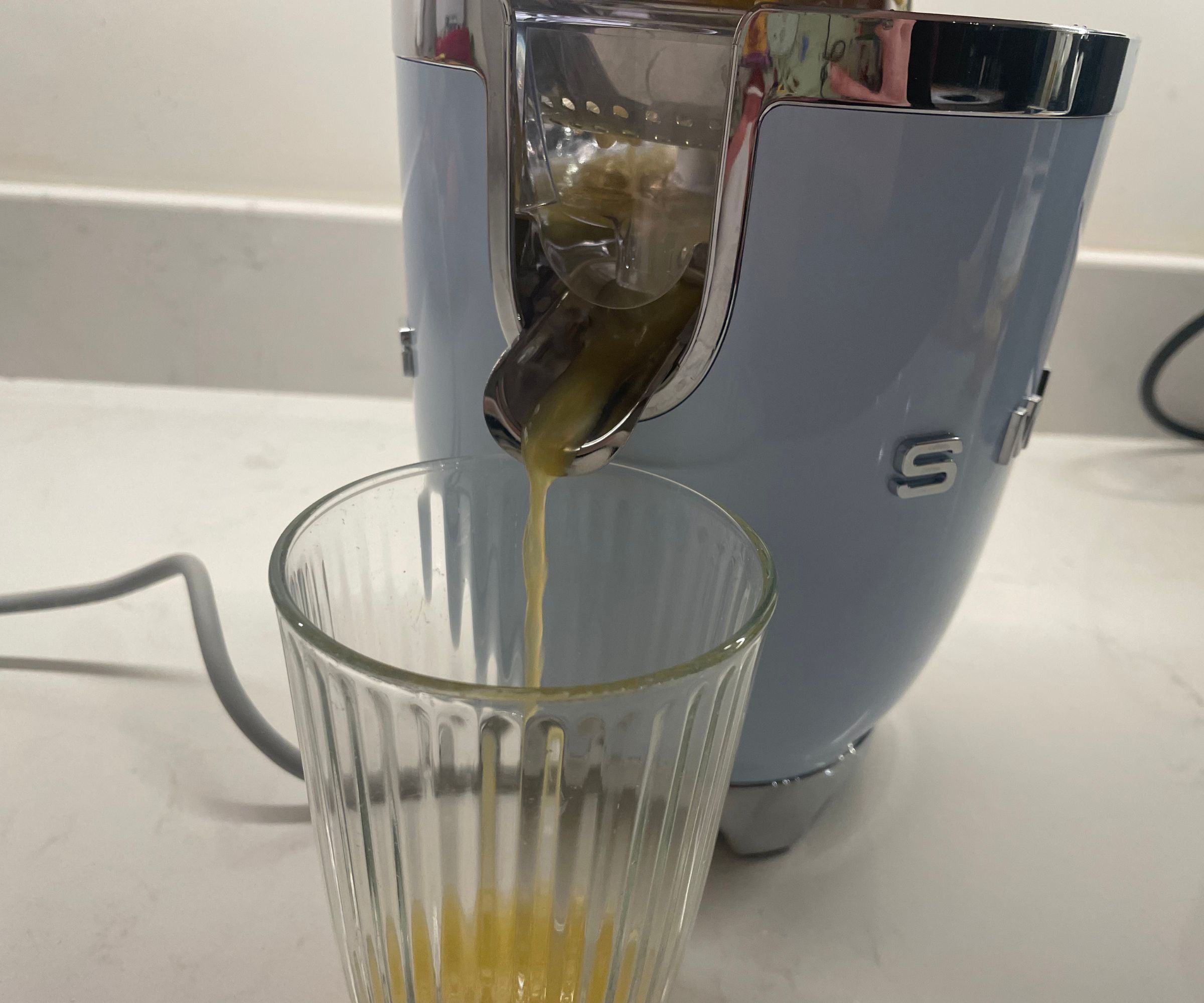

3. Smeg Citrus Juicer
Effortless juice for your morning OJ and evening margaritas
Juicer type: Electric Citrus Juicer | Power: 80W | Dimensions: 6.54"D x 6.54"W x 11.06"H
What we liked: While we're all for multi-functionality, testing the Smeg Citrus Juicer was as refreshing as a cold glass of orange juice. There's something luxurious about a product that unashamedly offers one function and does it brilliantly.
When we were setting up, we loved how easily the attachments slotted onto the top. It has a strainer attachment that can be removed if you like your juice with pulp, and the juice collected drips out of the side spout and into your cup. You simply press your halved citrus fruit onto the reamer, which begins to spin in circular motions with the pressure. You can then move the fruit around to reach all angles, and the juice and pulp drips down into the tray. It can handle small lemons and limes, oranges, and even larger grapefruits – turning the flesh into sweet, refreshing juice.
Who would it suit? Well, citrus juice lovers, of course. And design lovers. The adorable retro appliance comes in a range of cute colors – from pastel blue to classic white – and is even available as part of the Dolce & Gabbana collection at Williams Sonoma. The reamer and strainer are made of lightweight stainless steel, and the lid is constructed from sturdy BPA-free Tritan. The reamer, basin, and strainer can all be placed in the dishwasher. How easy is that?
Small criticisms: It's pricey, but for the functionality and design, we think it's just about worth it. The Smeg Citrus Juicer is plain sailing from start to finish.
You can find more details in our Smeg Citrus Juicer review.
Best Design
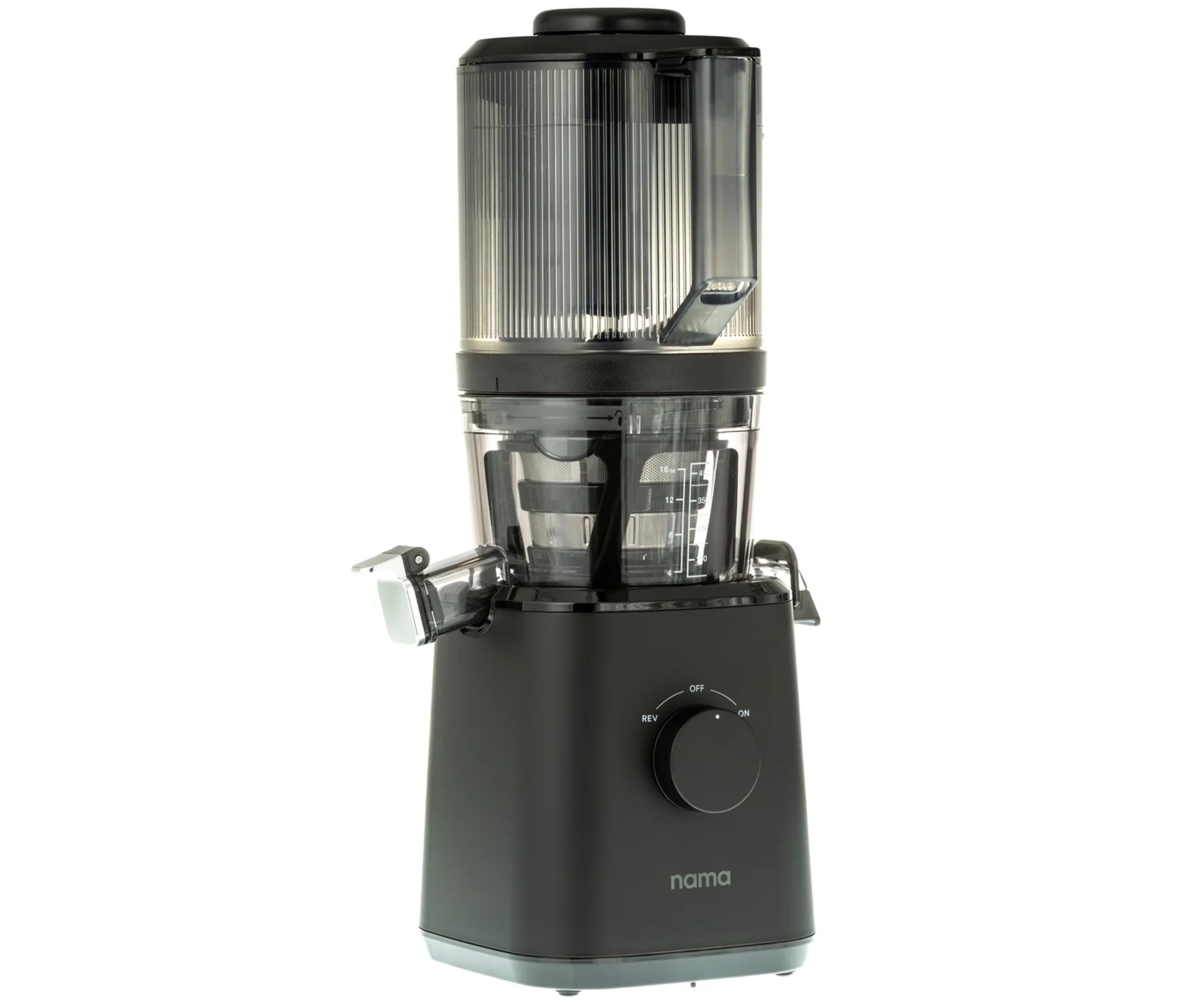
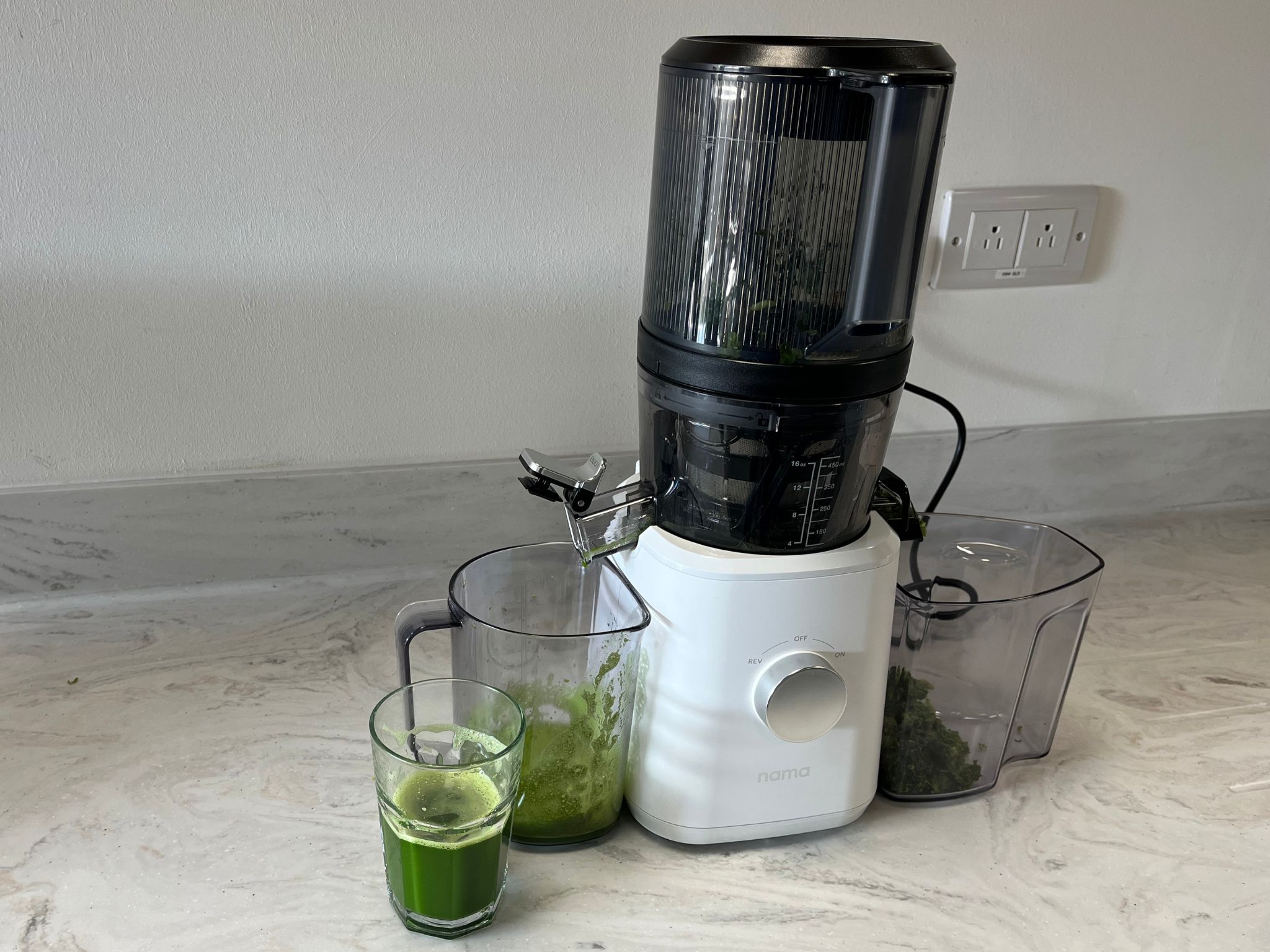
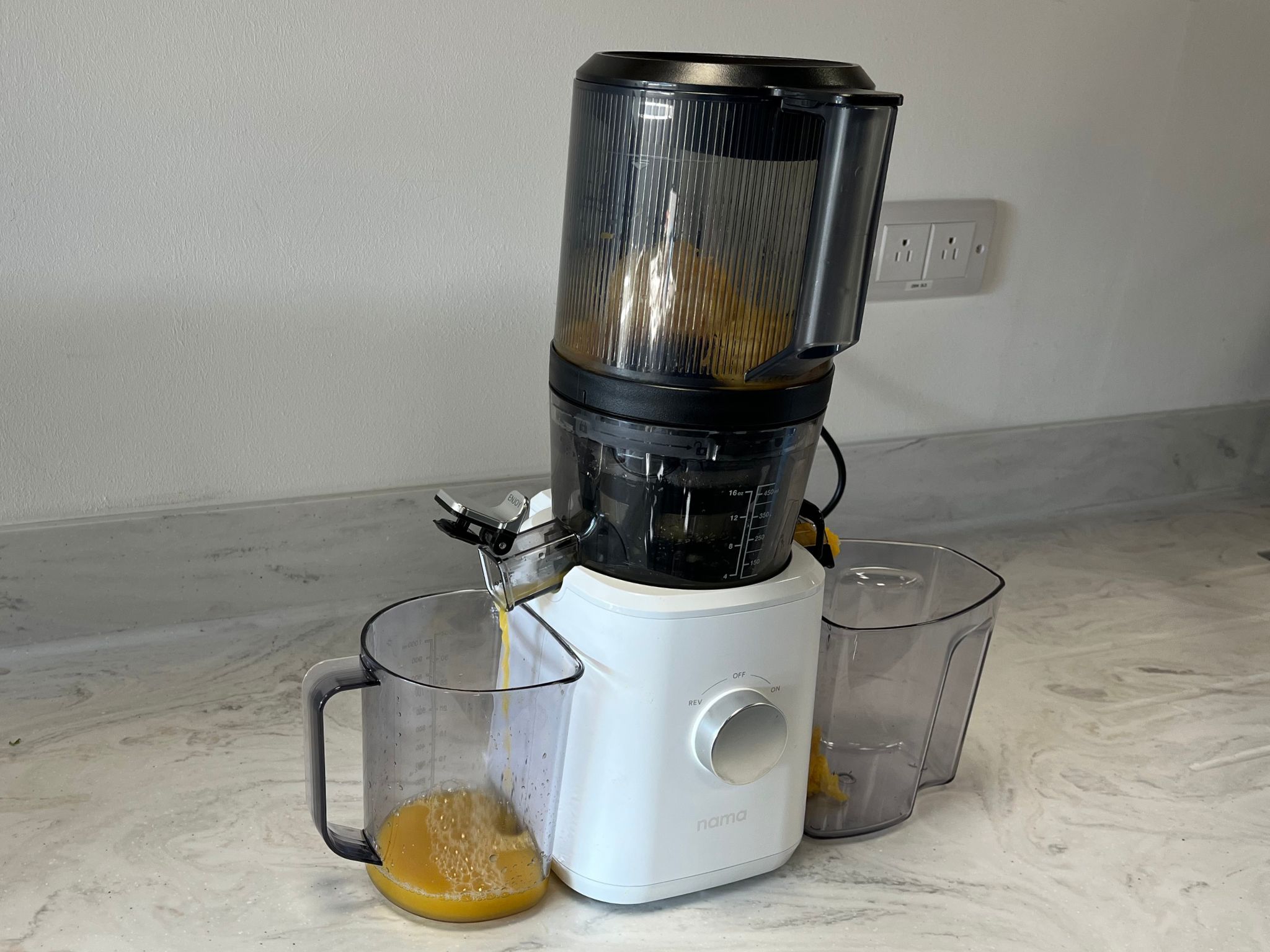
4. Nama J2
Low-lift juicing that looks as good as it performs
Juicer type: Masticating | Power: 200W | Capacity: 40 oz | Chute size: Unlisted
What we liked: This juicer is not only beautiful (sleek, modern, and visually appealing on the counter), it also aced our taste tests. We made the smoothest green juice with fully blended kale, spinach, cucumber, and apple. Our tester, Laura, said: 'I've been making oat milk, almond milk, ginger shots, and colorful juices in this for nearly a year now and I love it as much as the first time I tested it (if not more).'
After testing this juicer, Laura actually went out to buy one for herself. Which then prompted the Nama to appear in the homes of two other members of her family. 'Word got out about how dreamy the Nama is, and one whole year later,' Laura says, 'I have no regrets about my purchase.'
Who would it suit? Keen juicers with modern, spacious kitchens. The Nama J2 is a beautiful machine - it looks fantastically futuristic and will suit contemporary kitchens. It’s very tall and needs a lot of clearance above it, so it won't suit small spaces.
Small criticisms: The reason that we couldn't justify putting the Nama in the top spot is that it's almost eighteen inches tall and expensive. Yes, our overall winner is the same height, and a little pricier too, but the Nama J2 can also be fiddly to clean, it's not dishwasher safe, and there are lips, dips, and grooves where bits get stuck. It does come with a 15-year warranty though.
Our full Nama J2 review has more details.
Best Combination Blender and Juicer

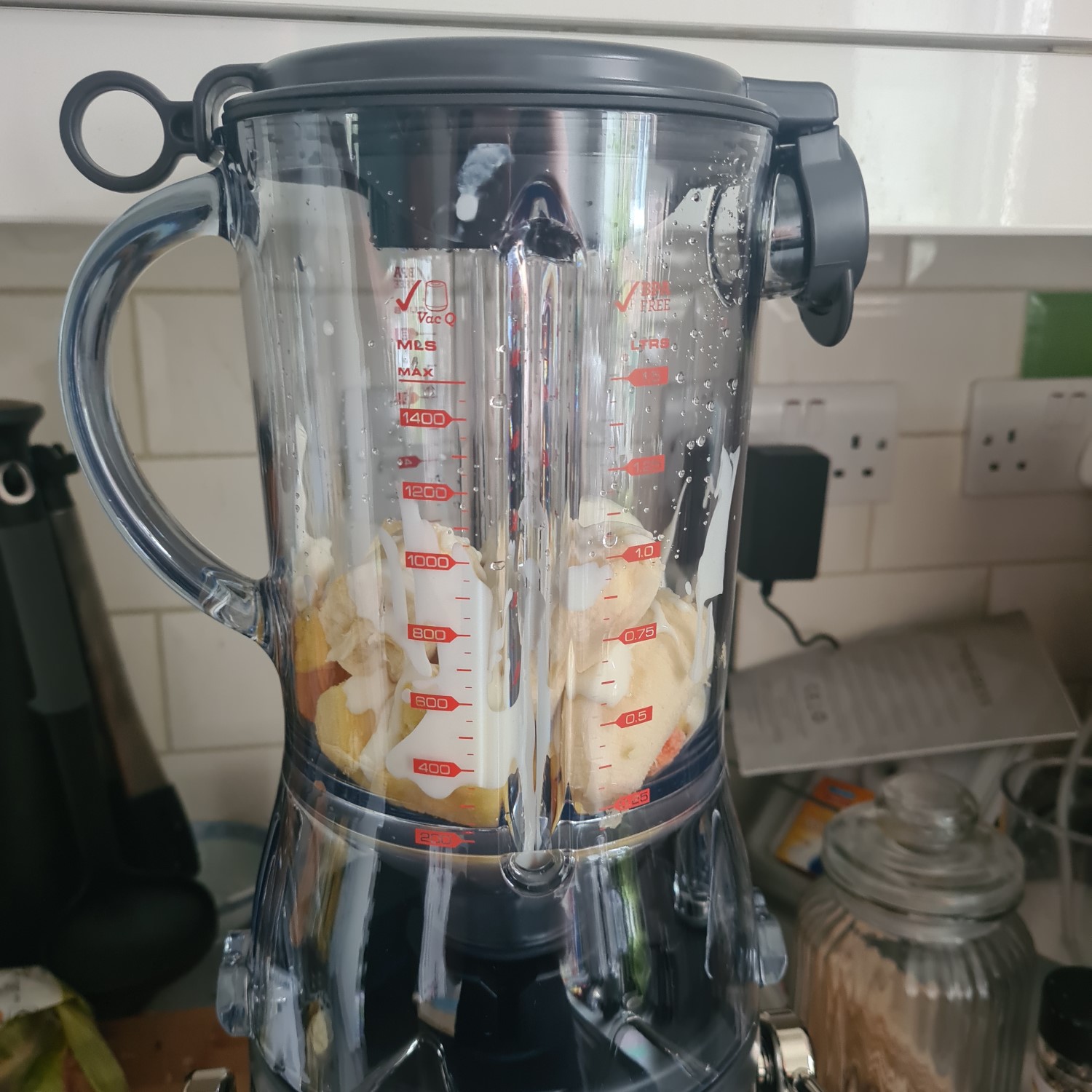
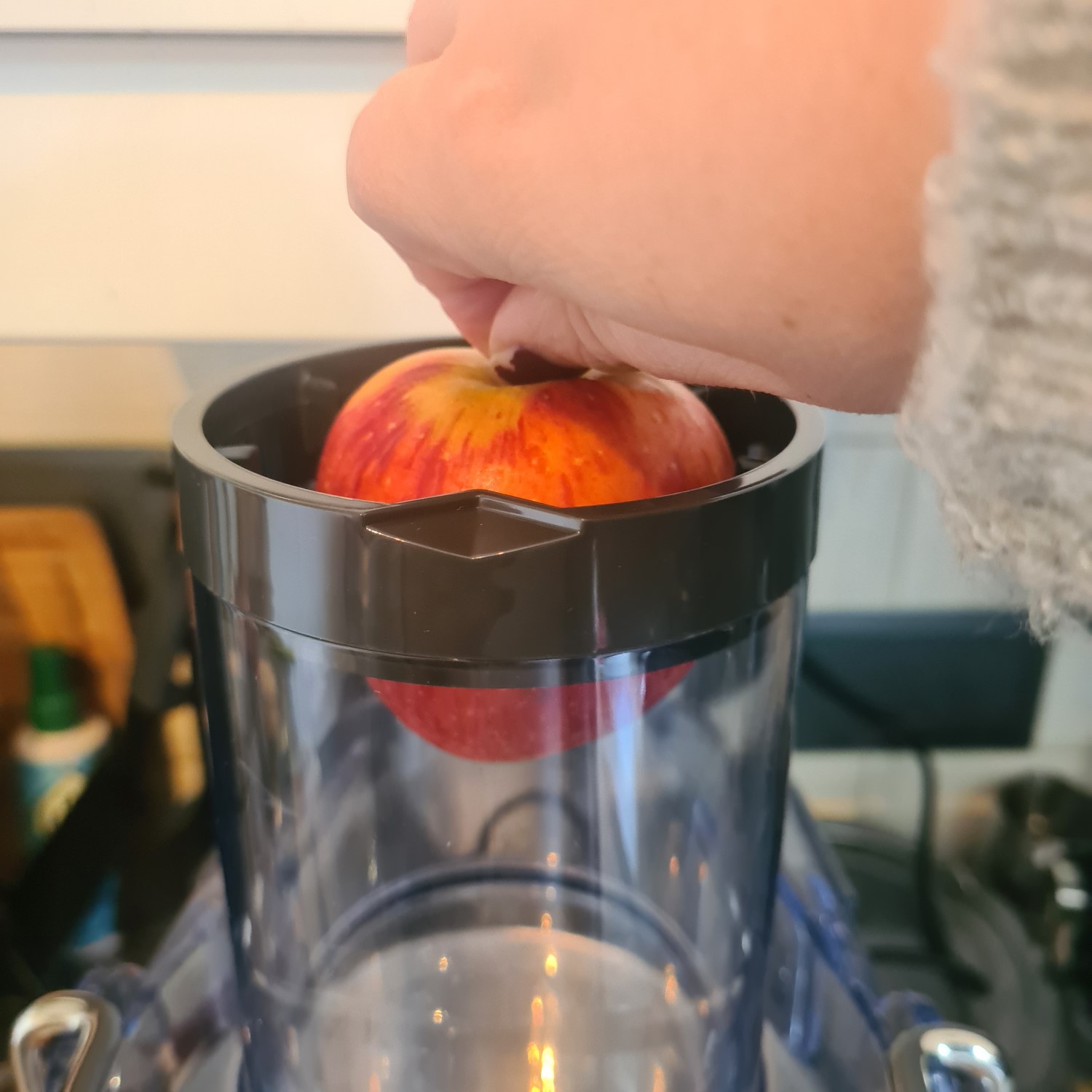
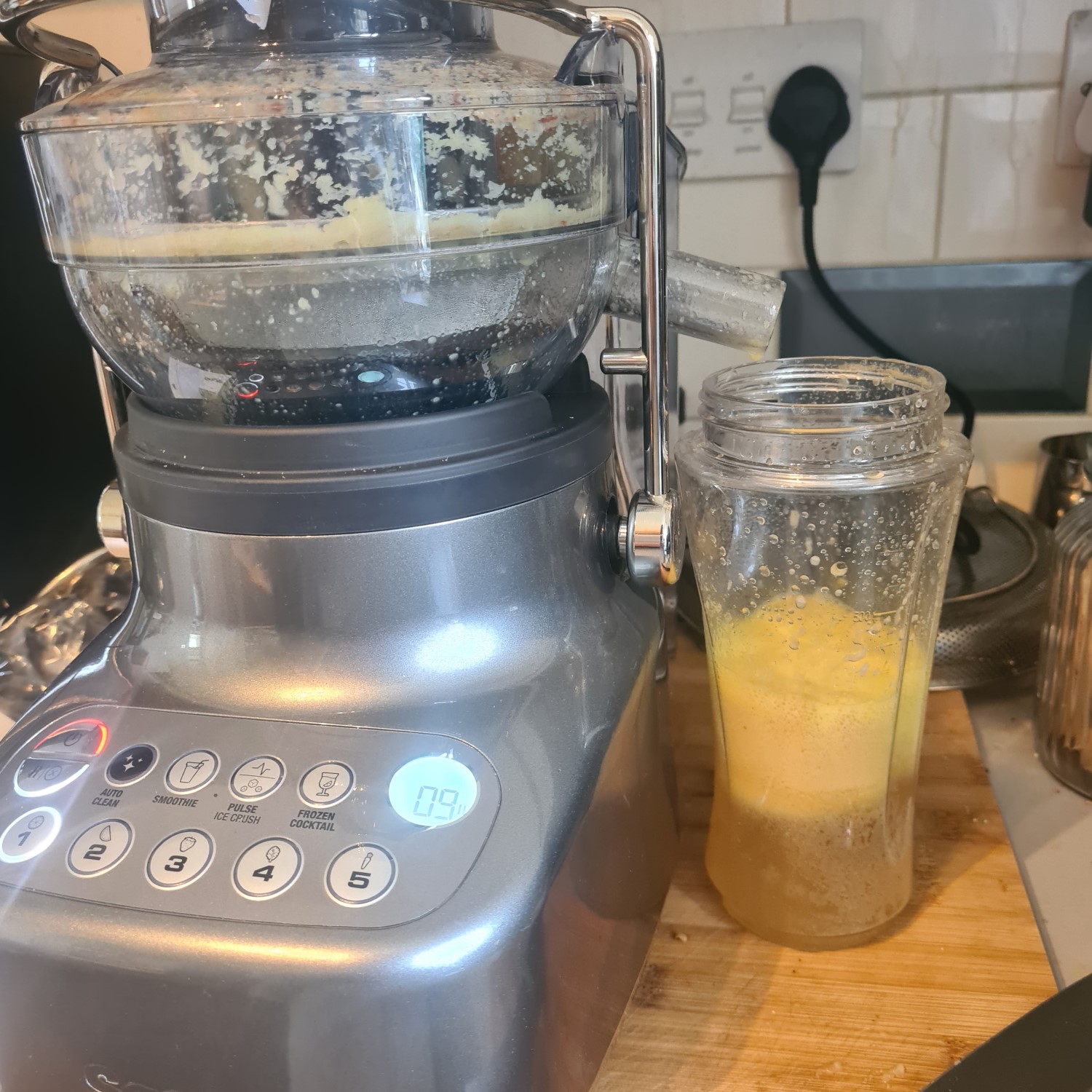
5. Breville The 3x Bluicer
A marvellous, multifunctional machine
Juicer type: Centrifugal | Power: 1000W | Capacity: 34 oz | Chute size: 3.5"
What we liked: Models that can blend and juice are rare. Breville's 'The Bluicer' is one of the few we’d recommend (the Nama C2 is the other). Unlike most single-speed juicers, the Bluicer offers five speeds, with a handy chart to guide you for different ingredients, from soft citrus to whole apples. Its extra-wide feed chute reduces prep time
Where it really shines is as a blender. It effortlessly handles smoothies, dips, soups, sauces, and even ice – it's up there with the best blenders on the market.
Who would it suit? The Bluicer is perfect for health-conscious eaters seeking an all-in-one kitchen appliance that can handle smoothies, juices, soups, and sauces with minimal fuss. It’s ideal for households that want all that versatility without multiple bulky machines.
Small criticisms: As a centrifugal juicer, it produces a fair amount of froth, so you may want to strain your juice for a smoother texture. It;s extraction rate isn't quite as good as a cold-press option, like our winning Kuvings. Plus, you need some storage space and height for the nearly 17-inch build.
You can find more detail in our Breville The 3X Bluicer review.
Best Value Juicer



6. NutriBullet NBJ50200 Juicer Pro
Speedy and super affordable
Juicer type: Centrifugal | Power: 1000W | Capacity: 27 oz | Chute size: 3"
What we liked: This is a centrifugal juicer, which is a more affordable design than the cold press models on this list. For first-time juicers, the speed and price of centrifugal models are appealing, so we've tested plenty. Nutribullet’s Juicer Pro was easily the best. In fact, it was so good, it was hard to believe it wasn’t a pricier cold-press juicer. We gave it carrots, ginger, spinach, and kale, and it whizzed them all into delicious juices. However, we did notice that softer berries and citrus fruits produced much smoother, crisper drinks than fibrous greens like spinach.
Who would it suit? Beginners or those looking for the best value for money. This juicer comes with a freezer tray, a froth separator, a cleaning brush, two grab-and-go bottles, and a recipe book – a surprising and welcome addition at this price point. You'll have a full juicing setup from day one, which is fantastic value for money.
Small criticisms: Due to the cheaper centrifugal design, you’ll end up with more foam, which indicates that some nutrients have been lost to oxidation, but the taste remains excellent. Another drawback is that the NutriBullet Juicer Pro can be noisy as it works, but since juicing only takes a few minutes, it’s not a major issue. If you can be patient with it, your bank balance will thank you.
You can find more details in our NutriBullet Juicer Pro review.
More Options
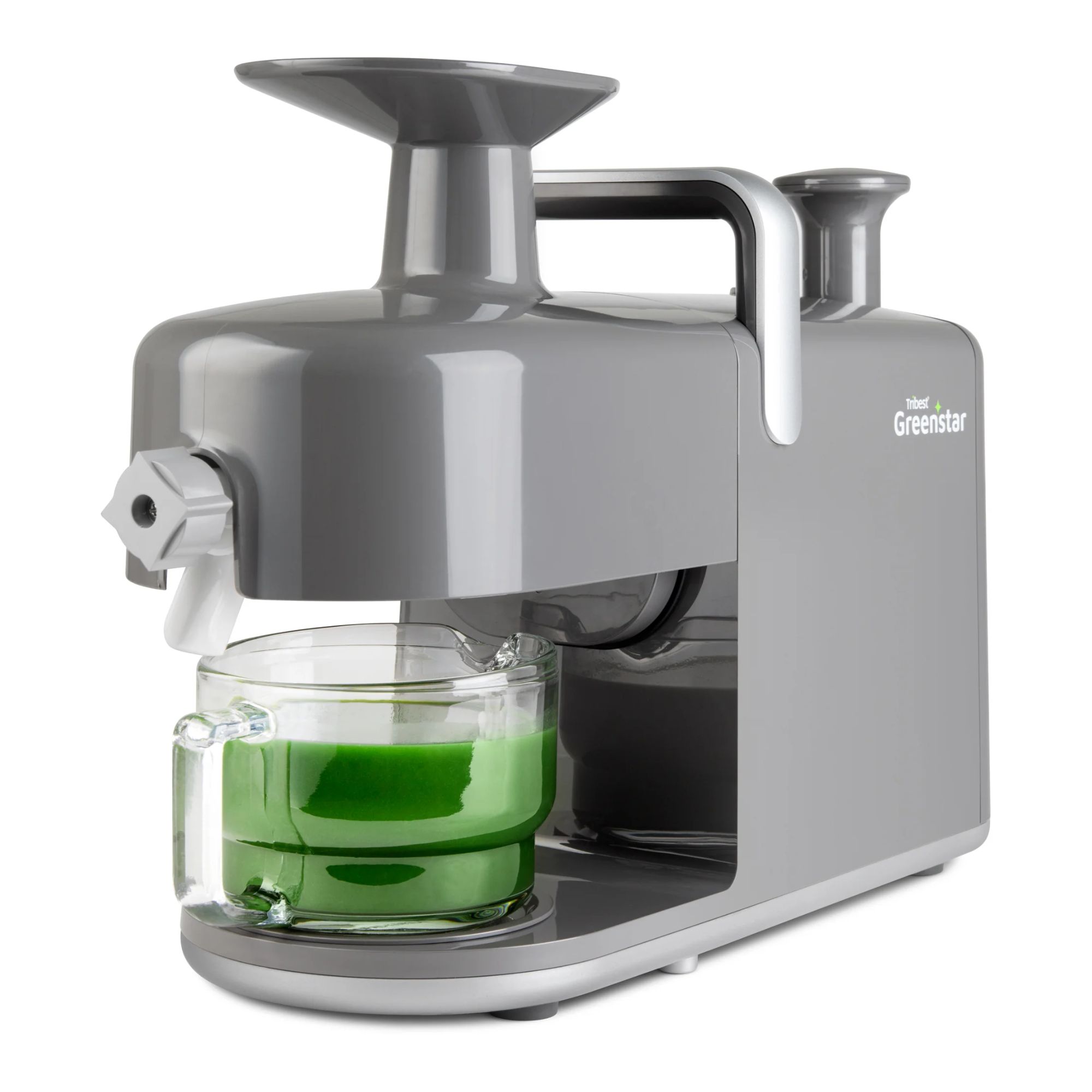
With the ability to make sorbet, pâté, breadsticks, and dips as well as juice, this is the most versatile juicer on the market. The process is very labor-intensive, but the results are professional-level.
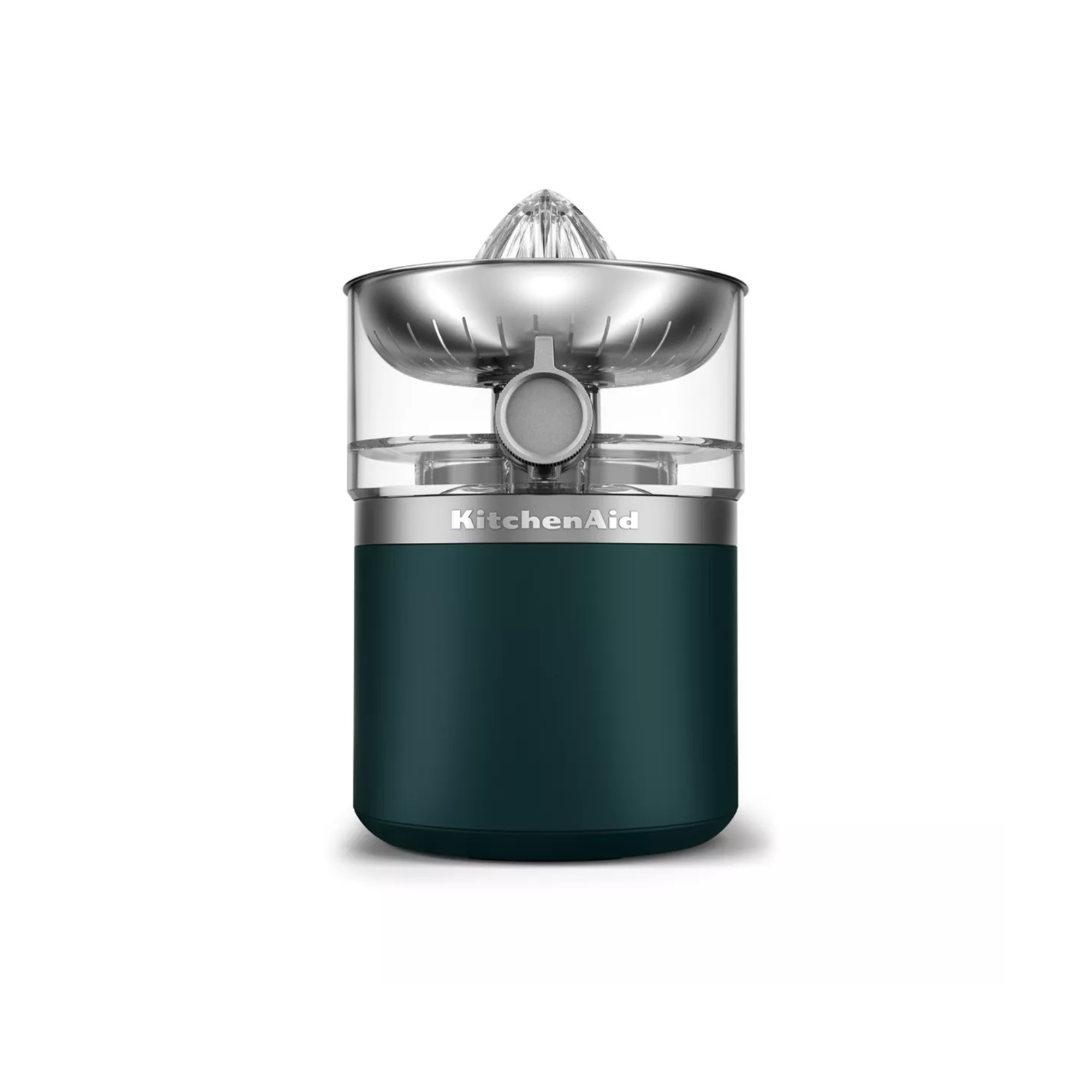
If you want to make fresh citrus juice outside at the grill, on the balcony, or kitchen island, this cordless machine is a great buy. It's easy to use and more affordable than the SMEG Citrus Juicer on this list.
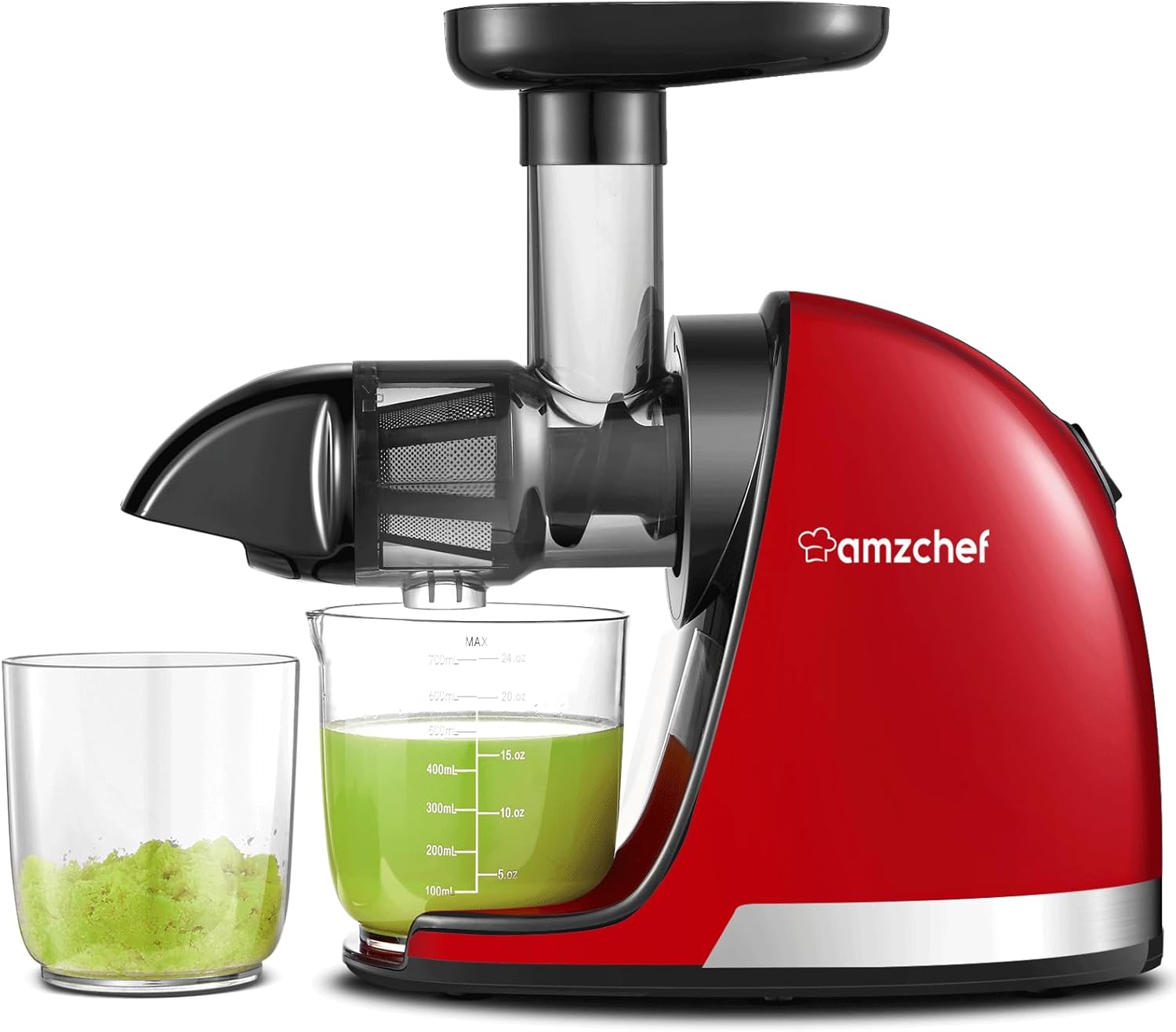
At under $60, Amazon's juicer is as cheap as chips. It is a little plasticky and stiff – certainly not a luxury or effortless experience – but it gets the job done with drinkable green juices, ginger shots, and more.
How We Test the Best Juicers
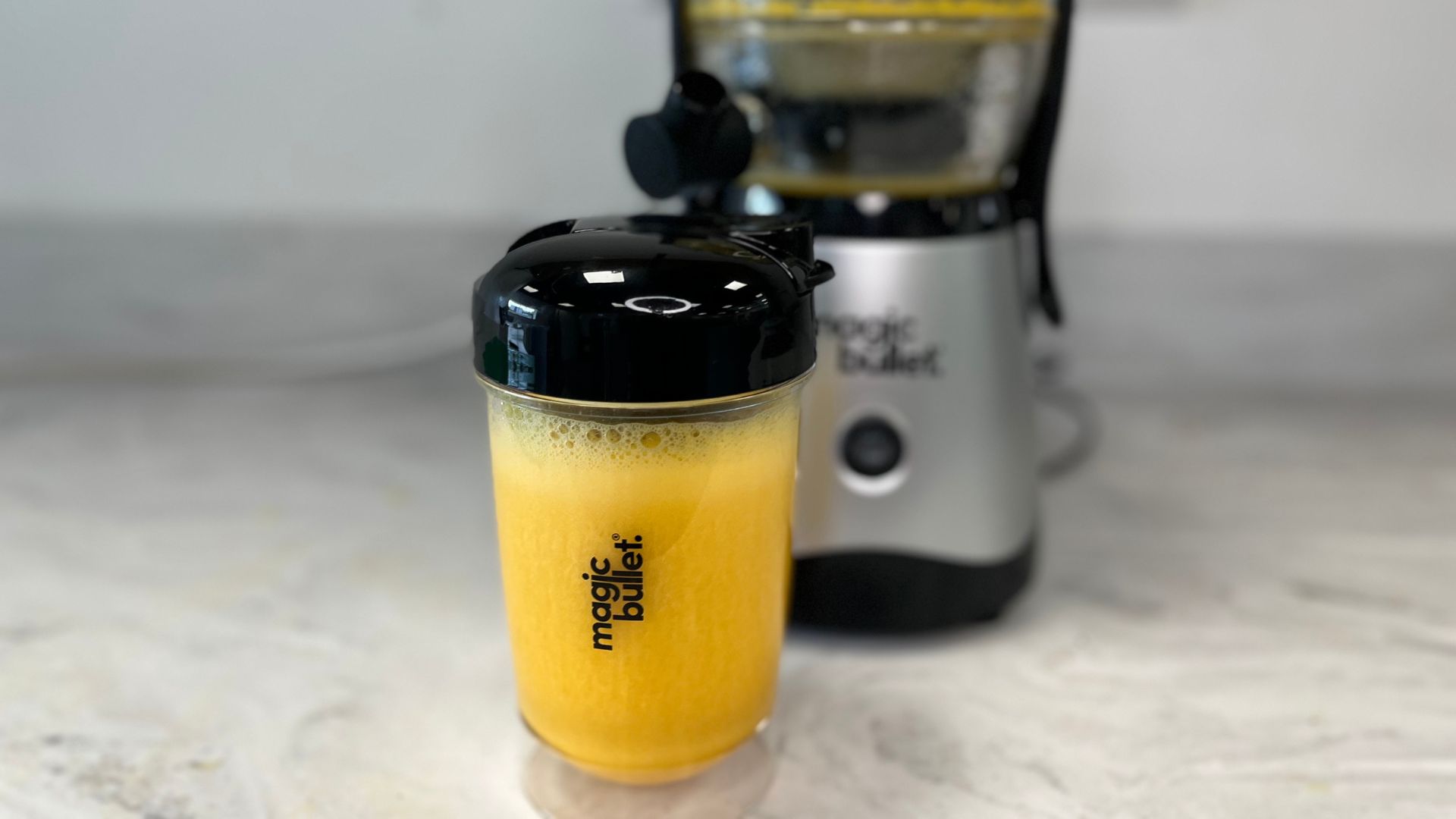
We put a lot of thought into how we test juicers. The whole process takes weeks, sometimes months, but that means that we can offer detailed insights into the real-life experiences of our experts.
It all starts with research. Our experts are always looking for the latest, greatest, and most innovative models on the market. Once we've found one that we think you'll like, we call it into our test kitchen, where we put it through intense, rigorous rounds of testing.
First impressions: As soon as we have our hands on the juicer, we start making notes. We let you know about the packaging and whether it's eco-conscious or not. Then, we'll test the weight, dimensions, and style of the juicer to determine what type of kitchen it would suit. Some models are too tall for wall cupboards, others are too heavy to lift in and out of cupboards, and others will be compact and simple. Either way, it's good to know all of these things before you get into the details of the review.
Test 1: orange juice: The first test we give all of our juicers is simple: orange juice. This soft fruit should be easy to press, but different juicers have different demands. For some, you'll need to peel and chop your orange, but for others you can simply add the segments. We'll measure the noise, amount of juice extracted, and we'll look at the waste. This should be dry and crumbly, rather than sloppy, because that means all the juice has been extracted from the orange.
Test 2: ginger shots: This test is tougher. We'll add ginger, carrot, and apple to the juicer, so it's loaded with harder, more fibrous ingredients. Again, we'll measure the noise, speed, extraction rate, and usability of the juicer in this process. It's important to keep a close eye on any foam and bubbles. The clearer and crisper the juice is, the less it has been battered and damaged in the extraction process.
Test 3: green juice: The iconic green juice is another great way to put pressure on any juicer. Spinach, kale, apple, ginger, lime, and cucumber will be tough work for any model, but if we can get a crisp, clear juice extracted, it's a wonderful success.
Test 4: extra features: Some juicers will be able to make nut milks, sorbets, tofu, and more. If this is the case, we'll make sure to test them out for ourselves. You shouldn't have to buy a juicer blindly, hoping that a brand fulfills its promises. We've been disappointed by that too many times. We'll also make notes on how easy it is to use.
Cleaning: Whilst cleaning is important with every appliance, it's particularly pertinent for juicers. There are often lots of parts and places for fibers and pulp to get stuck, so they can be hard to clean. Whilst some models are dishwasher safe, plenty aren't, so we will always let you know about this. I've tested juicers that are so much hassle to clean that I stopped wanting to use them.
Reviews and comparisons: Then, we'll take a step back and look at the competitors and other models on the market. This is a good opportunity to consider the value of the juicer, whether it's offering competitive performance and functions, and whether it's matching the aesthetics of other models.
Should you buy it? After all that, we'll draw some conclusions. Here, we'll talk about warranty, accessories, and who the juicer suits. If we think you should buy it, we'll tell you. Equally, if we think there are similar models or ones that would suit different needs much better, we'll send you in the right direction. We'll then continue to use it in our own homes to find any longer-term successes or snags with the model.
How to Choose a Juicer

There are a lot of different factors to consider when buying a juicer, which is why we have pages dedicated to how to choose a juicer as well as mistakes that people make when both buying and using their juicers. If you want some quick advice on how to shop the right juicer for you, here are the headlines:
Different types: There are five different types of juicers, but that doesn't need to be confusing for you. Each suits a specific type of juicing: fast juicers make quick, cheap juice, but they don't have the best extraction; cold press juicers have better extraction rates, but they can be more expensive; twin-gear juicers are really designed for experts and they can be expensive too. Then, there are steam juicers and citrus juicers, which are both self-explanatory.
Aesthetics and style: Juicers tend to be big appliances, so it's important that you choose one to suit your space. There are plenty of smart, modern designs, as well as different colorways. For some, Smeg's retro aesthetic will be perfect, but others might like the sleek lines of Nama's models.
Size and capacity: People often overlook the size and capacity of their juicers, but it's key to match yours to your kitchen. For example, if it's a tall model, it might not fit under wall cupboards. If it's a compact option, it might not have enough capacity to juice for the whole family. A small home will want about 34 oz capacity, whereas large homes will need about double that.
Functions and features Some juicers specialize in juicing, and that's it. There's nothing wrong with that, but if you know you want yours for almond milk, tofu, sorbet, and more, it's worth looking for a model that can combine all these functions into one.
Value and warranty: Juicers get really expensive. I've tested models that cost more than a thousand dollars as well as some that are less than fifty. If you don't have a discerning palette and you're not fussed about extraction, don't spend more than $150. However, if you're willing to spend more for a more durable model with better extraction, you can spend $500+. Any more than that will give you a luxurious model, but do your research to check that it's good value still.
Assembly and cleaning: Some juicers come as one big appliance, whilst others are in parts. This can either make cleaning very easy or tricky. I find models that come in parts easier to thoroughly clean, but more fussy and fiddly to use. Depending on your levels of patience, you can opt for simpler designs or ones that are a little more complex.
Best Juicer FAQs
What's the Difference Between a Slow Juicer and a Fast Juicer?
There's one obvious answer: speed. The blades rotate at different rates in a slow vs a fast juicer to create different sorts of drinks.
Fast juicers are also known as centrifugal juicers. These machines use a fast-spinning blade to chop up fresh produce, which is strained through fine mesh filters to separate the juice from the pulp. These juicers give quick results with little preparation, since they're powerful enough to tackle whole fruits. However, leafy greens and herbs tend to get caught in the blades. The heat and air generated by fast-spinning blades can create froth in the juice.
Slow juicers aren't all that slow: they're just not as quick as fast juicers. These machines, better known as masticating juicers, crush and squeeze produce to extract juice. You'll need to cut up fruit and remove hard seeds to get the most out of this machine. Slow juicers are more efficient than fast juicers, so you'll get more juice from each fruit. That juice should taste fresher and last longer, since less heat and air is added to the mix.
Should I Buy a Juicer or Blender?
Juicer vs blender: the debate rages on. It's really a matter of personal preference. Where blenders mash ingredients together, juicers are designed to separate the pulp from the juice for a smoother finish. Nutritionally, we've covered the green juices vs smoothie debate, setting which is better for your health, bank balance, and energy levels.
How Much Does a Juicer Cost?
How much you should spend on a juicer all depends on how much juice you want to make and how often you want to make it. For single servings or occasional use, you can get a decent juicer for around $100.
If you want to make a lot of top-quality juice, or you want to work with tougher produce, you'll need a premium juicer. These tend to retail for around $400-$500. While that might sound like a lot to spend on a small appliance, the best juicer can help you make the most of your fresh produce and form part of your healthy living routine.
Can I Make Juice in a Blender?
If you're in desperate need for juice and you don't have the right equipment, you could make a juice-like drink in a blender. However, in an ideal world, you'll be able to use your juicer to make juice. We've written a breakdown how to use a blender as a juicer as well as how to make apple juice in a blender.
Once you've bought one of the best juicers, it's important to take good care of it. It's worth learning how to clean a juicer to get the most out of your machine.
If you know you want a juicer, but aren't sure where to start, you're in luck: we've explained the five types of juicers and listed all of their pros and cons.
Design expertise in your inbox – from inspiring decorating ideas and beautiful celebrity homes to practical gardening advice and shopping round-ups.

Lydia is the Kitchen Appliances Editor for Homes & Gardens, testing everything from air fryers and mixers to juicers and coffee machines. She trained in Culinary Arts at Leiths School of Food & Wine and previously served as the Recipe Editor for Mindful Chef.
- Camryn RabideauContributing Reviews Editor
- Millie FenderHead of Reviews
- Laura HoneyeCommerce Editor
- Alex DavidGardens Contributor